News
2017 EIT Outstanding Student Award Runner-up
Courses completed: Advanced Diploma in Industrial Communications, Networking and IT
Date of completion: October 2017
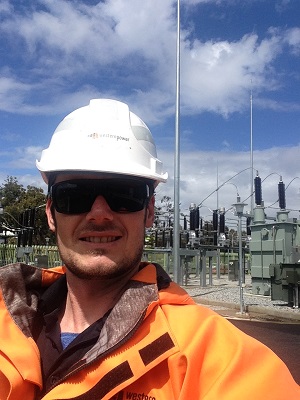
My experience with EIT has been fantastic hence why I decided to complete two Advanced Diplomas. These courses are well suited for people who work full time and are working in simular fields. The Lecturers have industry experience and are up to date with current trends in the industry with practical knowledge.
The learning experience was able to fit into my busy lifestyle allowing me to study at home with 24-hour access to remote labs without having to attend physical classes. All of the students in my class were from a similar background so we were able to relate to one another.
These courses have improved my knowledge at work helping me understand specific areas related to my industry. This has lead me in receiving two promotions in a four-year period. My understanding of the OSI model, TCP/IP and wireless technologies are a few examples of areas, which have led to my career success.
I have no plans of changing careers at this stage but wish start a Bachelor of Science in Electrical Engineering to further enhance my skill set at work and also opening up other opportunities that may arise in the future.
2017 EIT Outstanding Student Award Runner-up
Courses completed: Advanced Diploma of Applied Electrical Engineering DE22
Date of completion: October 2017
I am a trade & advanced diploma qualified electrical commissioning specialist, with extensive knowledge & skills in high voltage power distribution systems & possessing valuable experience in the oil & gas industry within Australia & overseas.
I am incredibly driven, a forward thinker, loyal and highly skilled, I have more than 10 years’ experience, as a trade qualified electrical technician in which I have been able to rapidly advance my career in the oil and gas sector. I’m greatly appreciative of the exceptional experiences I had so far in my professional career.
Experience at EIT
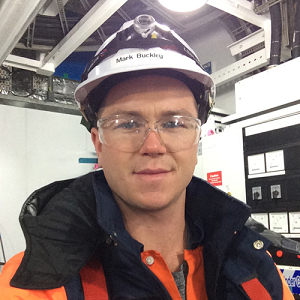 My study experience at EIT was extremely positive. I was initially apprehensive to enrol with EIT as I was concerned that I would overload myself as I had just been given a job promotion an about to enter into a very busy period at work. I was able to over come my apprehensiveness due to some encouragement from a work colleague. I am now extremely grateful that he gave me the push I needed.
My study experience at EIT was extremely positive. I was initially apprehensive to enrol with EIT as I was concerned that I would overload myself as I had just been given a job promotion an about to enter into a very busy period at work. I was able to over come my apprehensiveness due to some encouragement from a work colleague. I am now extremely grateful that he gave me the push I needed.
I found that I was able to keep ahead of my studies and gain good marks on my assignment by being very structured and organised with my studies. I work on an offshore gas platform which meant that I would be home for 3 weeks at a time with plenty of spare time and then away for 3 weeks at work where I would be very busy. I tried to do the majority of my study during the day whilst at home and then less while I was away at work. Small things that were able to help me to be organised was I would download all the module content to my laptop and file the documents in structured folders as well as keep a study diary to schedule and plan the work I needed to do for the course.
The online format delivery of the course was tremendous, and the course content such as the slides and the readings allowed me to keep a well structured source of information that I was able to learn from then continue to refer back to when needing information not only for my course but for my day job as well.
I found the access to many software programs via the remote labs very useful, which saved me from having to download programs onto my own computer. My Learning Support Officer was very diligent in her efforts especially early on in the course when students were getting to know the structure.
I was extremely lucky with the group I was put in for the group assignment, we were all likeminded and dedicated to getting good marks. When I received my Module 3 results it was probably my highlight of the course as it covered a lot of new things that I hadn’t seen before around project management which in turn improved my leadership skills and understanding of management decisions made in my workplace. But due to that reason the study required for the fundamentals of engineering (module 3) was also probably biggest challenge.
I found all the instructors very informative but none of them stuck out as being better than the others or worse for that matter. But to be honest I found that I benefited mostly when I was learning things by myself with the readings, my laptop and assignments and then being able to refer to my work experience to put the theoretical knowledge in a practical context.
EIT in the workplace
Due to the EIT course I am now more well rounded in my technical ability. I feel with the course and my work experience I have been able to built a great base of knowledge around the electrical industry in which now I hope to add to that with new work challenges.
My strength in my job is my technical ability and being able to advise others where needed. There have often been times where I’ve being able to advise colleges better because I’ve been able to draw from the knowledge I’ve gained from this course.
This has allowed me to excel in a new role at work where initially I was potentially out of my depth but now feel not only confident in the new role but proud of how I’ve developed. My progress has been due to a combination of the experienced I’ve gained in the role and the completion of the EIT course.
Rhys Morgan – Lead Electrical Engineer Wheatstone Platform
“Mark’s technical ability has developed along a steep learning curve since he took the role of lead electrical technician which has coensided with his electrical engineering studies. His ability to carry out technical tasks and advise his work mates on technical issues is a strength of his, and I have no doubt this has improved due to his commitment to his studies”.
Training and career goals for the next 5 years...
My career goals are very clear; firstly, gain employment as a technical expert with a major global oil and gas company and secondly to develop my technical ability through my on the job experience.
As far as formal training goes my ambition to pursue a bachelor of science is very strong and I’m hoping that I can secure a long term position within the oil and gas industry which is also conducive to my study efforts so I can then enrol.
2017 EIT Outstanding Student Award Runner-up
Courses completed:
- MIA01 - Master of Engineering
- GPI01 - Graduate of Diploma in Project Management.
- DIA01 - Advanced Diploma
- Certificate Process Control
- Certificate Instrumentation
- Certificate Technical writing
Date of completion: Completed Master of Engineering in April 2017
I was born and raised in South India in the village of Pariyanvayal. From an early age, I was involved in academic and sporting pursuits with science being my favourite subject. My interest in science led me to follow a career in Engineering, specializing in Electrical and Electronics Engineering. I began my Engineering Diploma in April 1993 and completed it in April 1996. My first employment was with KCP Limited in India. I was one of three successful candidates from over 100 student applicants. I’ve continued working in Instrumentation and controls as a Supervisor / Engineer and gained extensive experience in the fields such as design, programming and commissioning. In 2005 I moved to Australia and started my career as an instrument Technician.
Experience at EIT
My experience with EIT/IDC has given me a chance to expand my skills in the field of instrumentation and process controls. From past experience and future opportunities, I am certain there will be many opportunities to learn and advance my career which I am truly thankful for.
Loop tuning/Process Control:
Mr Rodney Jacob at IDC loop tuning course taught me many tips and rules that I was unaware even existed, and would still be unaware of had it not been a part of my experience. Because of this, I realized I still had a lot to learn despite what I thought I knew. This has allowed me to improve my skills even further as I continue to attend EIT courses giving me the confidence in field of process control and automation.
Technical Writing:
Other great experiences with EIT, particularly in the technical writing program, has allowed me to gain further knowledge about a variety of technical writing skills and reports. This course allowed me to become competent with my technical writing ability. I’ve written various technical documents from functional descriptions to technical specification for Ammonium nitrate and GLNG projects. Without the technical writing course MIA01, it would not have been possible and I will always be thankful to Mr John Piperides for this.
DIA01: Advanced Diploma
I am proud to say that I was one of the first students to complete this course. A big achievement for me was furthering my skills and my learnings in Safety Instrumentation and Emergency Shutdown Systems for Process Industries Using IEC 61511 and IEC 61508 during this course. This course material was well designed and easy to understand to explain the standards to all the students. We were very lucky have Dave Macdonald for this topic.
I would also like to take this opportunity to personally thank Erin Gill, the course co-ordinator as she was very responsive and always very proactive in helping us.
GPI01: Graduate Diploma in Project Management
Again, I was fortunate to be one of the first students to complete this course. After completing this course I’ve taken on roles as lead ICSS engineer for Santos GLNG project. I’ve also had the privilege of spending almost two years in Houston Texas at the EPCM contractor’s office to supervise the EPCM teams and activities such as design reviews and approvals. All the modules in the course allowed me to reach a new level in the PMT field.
MIA01: Master of Engineering
I am very proud to have been one of the pioneers and batch of the first successful students to complete this course. This course was a huge challenge for me personally. As mentioned before that, without the technical writing course skills and completion of MIA01 it would not have been possible. I was almost about to give up until Natalie Holland and Robert Holm provided me the relentless support to complete the course.
In summary, my time with EIT has enriched my life in many ways. It’s provided me with the necessary tools to enhance my technical skills even further, taught me valuable information about this diverse world and people and concepts in general and eventually will allow me to hopefully become even more successful in my working life once I’ve finally graduated with my master degree.
EIT in the workplace
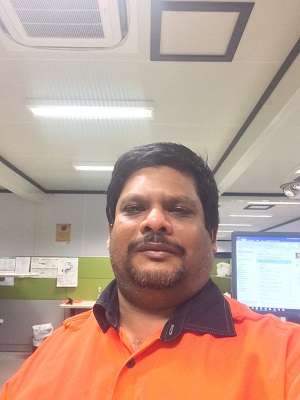 In 2005 I moved to Australia and started my career as an Instrument Technician. As part of my career development I decided to update my qualifications. My first course in Australia was the Instrumentation, automation and process control with IDC. Completion of this valuable certificate course took me to the next level as a commissioning controls system engineer for the Alcan Gove G3 project. During this project commissioning I gradually got involved in the process control world and had taken another IDC course in process control and loop tuning to expand understanding about the process control.
In 2005 I moved to Australia and started my career as an Instrument Technician. As part of my career development I decided to update my qualifications. My first course in Australia was the Instrumentation, automation and process control with IDC. Completion of this valuable certificate course took me to the next level as a commissioning controls system engineer for the Alcan Gove G3 project. During this project commissioning I gradually got involved in the process control world and had taken another IDC course in process control and loop tuning to expand understanding about the process control.
I’ve continued working in Instrumentation and controls space as an Engineer and gained extensive experience in this field including Design, Programming and Commissioning. This included hands on experience as a Control Systems Engineer / Process Control Engineer and Functional Safety Systems Engineer. It has allowed me to work various major DCS systems such as: Siemens (S5, S7-200, S7-300, S7-400), Emerson (Delta V DCS), Rockwell (Micrologix, SLC, Contrologix etc), GE Fanuc (90-30), HIMA Safety system, Triconex and Honeywell safety Manager. Through my work exposure I gained proficiency in communication protocols such as Serial (RS232/485), Control Net, Profibus, Modbus, Field foundation bus, HART, Data Highway and Modbus TCP/IP.
In conclusion, during my 20 years of experience in fields of Process Control Systems Engineering, I have commissioned a diversity of automation projects for multiple industries such as: Pulp and Paper, Oil and gas, Mining, Power, Water, and Petrochemicals in various locations all over the world. It has also allowed me to conduct the maintenance and modifications relevant to instrumentation as per the process requirements in numerous situations.
My work ethic ensures that I always strive to produce quality work and the best of my ability whether I’m working as part of a team or on my own. I’m always striving to maintain an open mind and am comfortable working under pressure to meet clients deadlines.
I have completed the following qualification namely: Advanced Diploma DIA01, Graduate Diploma GPI01 and MIA01 in Industrial Automation with IDC technology / Engineering Institute of Technology as part of furthering my career development to fulfil the educational gaps I was missing. This course was conducted by very experienced and qualified instructors/ Lecturers.
Training and career goals in the next 5 years...
With my recent Master degree from EIT, I believe it will allow me to reach the very top levels in the field of project management. As you can see I have developed from technician to lead engineer PMT. I can’t see any road blocks to becoming a senior project management member in the LNG industry with in the next 5 years.
2017 EIT Outstanding Student Award Runner-up
Course completed: Advanced Diploma of Electrical Engineering (Electrical System)
Date of completion: October 2017
My name is Jared Stone, and I’m employed at Western Power as a Primary Plant Technician, part of our Asset Management Business unit.
Having come on board originally as part of Western Power’s apprentice program in 2011, I successfully completed my training in a shorter timeframe than originally planned whilst also completing further studies during the same period.
After my apprenticeship I sought to begin further studies, and after commencing my degree in October of 2015 I’m proud to say I’ve successfully completed the studies.
I’m an automotive enthusiast, and enjoy playing drums with my band in my spare time.
Experience at EIT
The highlights of my experience whilst studying at EIT were namely flexibility and suitability.
I could tailor to suit me and my varying needs over the time of my course, which would’ve been incompatible with almost any other format of delivery. The flexibility of largely self-paced study and recorded webinars allowed me to work my study efforts into my schedule whilst still remaining within the full-time workforce and still able to pursue my personal passions.
What I found during my time was that the content broadly swept across many different specialties within industry, leading me to conduct further self-guided study when a topic of particular interest was raised such as high voltage testing, protection systems, or battery energy storage.
The use of 100% online technologies to deliver the content in multiple ways meant that sound communication channels were extremely important when the objective of an assessment wasn’t clear, or the content was beyond my understanding. It was at these points that being able to reach out to lecturers at my leisure and hear back from them in a timely manner was great, as it meant that touch of extra support or guidance was never far away at all times.

Aside from this conducting group work over multi-month projects was extremely challenging at times. As group members all worked for different employers, had different methods of available communication, and were even governed by different time zones!
Whilst this proved to be challenging, being able to lead my group project through its various stages, successfully submit assessments before deadlines, and produce great results thanks to excellent time management, teamwork, and communication was satisfying to look back on.
EIT in the workplace
Knowledge gained from the program is employed on an almost day-to-day basis in my current position with my employer. I’ve found myself calling on almost every part of the content covered during the degree, be it the various types of maintenance regimes, attributes of network assets, or planning and implementing process plans.
One particular point to note is that many parts of the knowledge gained during the course of the degree is now assisting me to be a part of the drive to sustainably reduce the cost of managing our network assets. Prior to the course I didn’t have a grasp of asset life cycle assessments, or why they were essential when considering design, procurement, installation, maintenance, and disposal of assets.
For example understanding trades-offs between capital cost of products and forecast maintenance requirements has allowed me to look beyond what I saw as ‘the way it is’ during my time in the field, and indeed forms part of initiatives to drive down overall business costs.
Aside from the technical knowledge, learning the fundamentals of professional engineering and project management during my time in the degree is proving to be of great use. Having learnt how to better collate information, communicate with others, and collaborate across differing professional backgrounds is allowing me to take in more diverse types of information, and consider many perspectives different to my own in the course of my work.
My successful completion of the course over time was eventually intrinsically linked to receiving an offer of a promotion within my company to my current position.
As my current team leader was made aware of the potential of me joining his team as a technician he pointed out that it was excellent to see I would still continue to study and develop my knowledge in a formal manner whilst taking up the role.
If it wasn’t for having been enrolled in the course and actively studying, it would’ve been far harder to prove to my management team that I had great potential to be a part of their local workforce, and contribute good work.
Colleague / Mentor Neil Kilcullen:
“Since I first met Jared as an apprentice he’s always shown great interest in going above and beyond what is required of him in his work and learning. During the time that he’s been studying at EIT I’ve seen him gain knowledge at such a rate and apply in ways that I now see him as less of a mentee and far more as a capable workmate in engineering roles that I am sure he’ll occupy in the future.
I look forward to seeing Jared continuing to seek out new opportunities that his education will now provide to him.”
Training and career goals for the next 5 years...
My overarching goal for 5 years and beyond is to continue to seek both on-the-job and off-the-job training to develop both my breadth of depth of skills and knowledge at a rate that helps me to add value to both my employer, and my community.
In my current role with my employer my goals are to learn the philosophies, strategies, and practices of asset management then successfully implement those learnings in my day-to-day work.
My training goals centre around diversifying my fields of knowledge and capabilities, namely in business and project management.
Having spent several years in the operational workforce initially as an Apprentice, and then as a tradesman performing technical work I’m now planning to pursue these diverse studies to become a flexible, multi-skilled member of the workforce.
Aside from my professional work I hope to continue carrying out activities and engagements as a public speaker and ambassador for youth mental health, and the learning that comes from these pursuits will continue to bolster my leadership skills in and out of the workplace.

2017 EIT Outstanding Student Award Runner-up
Course completed: Advanced Diploma of Industrial Automation
Date of completion: 25th September 2017 (DIA 22)
 I am Mr. Dominique Mutombo Hoyi, a Congolese (DR Congo) who is now living in South Africa (Johannesburg). I was born in Kinshasa (DR Congo) on the 15th October and did my Pre-primary and primary school there before my entire family moved to Mbuji-Mayi (Kasai Oriental Province, 1997). Then the family moved again from Mbuji-Mayi to Lubumbashi (Katanga province, 2003) due to some economic problems, and in Lubumbashi is where I did all my high school studies (2006).
I am Mr. Dominique Mutombo Hoyi, a Congolese (DR Congo) who is now living in South Africa (Johannesburg). I was born in Kinshasa (DR Congo) on the 15th October and did my Pre-primary and primary school there before my entire family moved to Mbuji-Mayi (Kasai Oriental Province, 1997). Then the family moved again from Mbuji-Mayi to Lubumbashi (Katanga province, 2003) due to some economic problems, and in Lubumbashi is where I did all my high school studies (2006).
Then from the 20th July 2007 I flew to South Africa for my University studies of which I had the opportunity to join Vaal University of Technology to do my National Diploma in Electrical Engineering (Heavy current) from January 2009 up to July 2012. After my National Diploma course completion, I was hired at TECMED Africa (LTD) as an X-rays Trainee Technicians for one year to complete my in-service training (WIL, Work integrated Learning) before the graduation.
Then from December 2012, I have joined AGE Technologies JHB as Learner Technician of which I have become a Project Technician then a Project Engineer after a lot of hard work and determination on my daily works and tasks.
My decision to apply at The Engineering Institute of Technology (EIT) for my Advanced Diploma in Industrial Automation (DIA 22) came after I started working for AGE Technologies (JHB) as a Project Engineer or a Control System Engineer. I realized that I was missing key information to apply to an application or project while working on a giving project or task, be it a simple or complex one.
Since Age Technologies (JHB) is an Integrated and Control System company dealing with process control and industrial automation, to work for a Control System company like this one or to become a good Process Control Engineer you need all industrial automation knowledge and information and these kinds of knowledges are available at a well-known, recognized and accredited Institute such as Engineering Institute of Technology (EIT).
Experience at EIT
What impressed me the most at EIT while I was doing my Advanced Diploma (DIA 22) are the course program, the structure of the course, the content of the course learning materials. The course programs are classified based on the engineering discipline, for example if you want to become an Electrical Engineer, you need to do the Advanced Diploma in the Electrical Engineering and if you want to be a Control System or a Process Control Engineer, you need to do the Advanced Diploma of Industrial Automation like me.
The structure of the course is planned in the hierarchy order such that the next module is the continuous of the previous module. This means if you did well on the previous module, the next one will not give you issues.
The information contain inside the course learning materials is helpful and very rich base on your engineering discipline (Industrial Automation, Process Instrumentation, Electrical Engineering, Civil Engineering and so on….). For myself, the course learning materials or manual information is helping me a lot during my current career and especially while I am working or writing my engineering (software) application for any of my given projects.
Talking about my course (DIA22) lecturers and Learning Support Officers, they were well organized and had a lot of experience in their specific engineering fields. They were skilful as well since they were using lifetime experience to explain about a topic of the subject, this method was helping the students to get a clear understanding of what the module is all about.
The remote class method used at this Institution was helpful to me in many aspects. Sometimes attending classes will require students to stop whatever they were doing and be at location (school building) at specific times and for some time. But with remote classes what I needed was just the internet connection regardless where I was located at that moment.. The technology used for me to communicate with my follow students was advanced and good.
Sometimes I had difficulties with my course while using the software to login, how to convert the GMT time to South African Time (Pretoria time), be on time on each remote class and the module assignments.
EIT in the workplace
The knowledge gained from EIT while doing my Advanced Diploma of Industrial Automation helped me a lot in many fields of my current career position (Project Engineer or Control System Engineer at AGE Technologies JHB).
This information helped me first how to differentiate the types of control system (ON/OFF Control, Continuous Control, Batch Control and Sequential Control System) I am working on at a period and how to react while working with any types of these control systems.
This information gain from EIT make me able to do the fault finding or to do the troubleshooting in any build control systems.
Since electrical service technicians and engineers of today must understand the communications problems that crop up in multilayered building control systems, the advent of electromechanical controls in the 1970s, analog controls in the 1980s, direct digital control (DDC) in the 1990s, and complete building control integration in the 2000s has progressively offered building owners and facility managers powerful new options for reducing energy costs and improving occupant comfort.
However, as these multiple generations of pneumatic, electromechanical, digital, and integrated controls are layered on top of each other, communications problems become much more difficult to identify and troubleshoot.
Integrated control systems facilitate smart manufacturing for your industrial automation solution. The knowledge gained from EIT while doing my Advanced Diploma of Industrial Automation enables me to deploy an industrial control system individually at a machine or line level to solve specific needs.
The knowledge gained from EIT while doing my Advanced Diploma helped me to improve my design skills while working with control systems, this knowledge is applied in these fields:
- Control System Devices Input Output Processing
- Input Control Devices: Input devices are used to sense a condition, detect movement or position, indicate a limit or set point has been reached, sense intervention by an operator, detect an alarm, etc. Typical input devices may include limit switches, photoelectric sensors, pushbuttons, proximity sensors, an operator interface, etc.
- Output Control Devices: Output devices are used to control actions such as motion, start/stop of equipment like conveyors and pumps, on/off control of valves, operator alerts/prompts, status indications, etc. Typical output devices include relays, motor starters, pilot lights, operator interface graphics and numeric display, etc.
- Processing Control Devices: All control systems can typically be defined as having inputs, outputs and some form of decision making going on in between so that outputs are controlled based on the status of the inputs. This brings us to our third category, the “decision making” element. The microprocessor used on the motherboard, along with its memory, the operating system, and the application program would serve as the decision-making element. As a matter of fact, PCs are used in some automated control systems as the decision-making element, together with industrial input and output (I/O) modules.
I have also applied the knowledge gained from EIT while doing my Advanced Diploma while optimizing, upgrading and commissioning the control systems (Mine systems, factory systems, etc…).
An example of this is when I was upgrading the plant called Kubili Recyclers (from Rockwell SLC 500, 5/04 CPU to SIEMENS TIA Portal V14, S1500 CPU).
My future vision in my current position is to become a great senior Process Control and Software Engineer, and then later, I can join the engineering management team within a well-known and organization.
The motivations in my current position are the senior Project Engineers whom I am working with since they can solve complex problems (Networking, Control and Power circuits within the industries (sites or plants).
Training and career goals for the next 5 years...
- First, to become a Process Control Engineer in life, you must be qualified. This means obtaining at least a Bachelor Degree in the field of Electrical Engineering (Process Control and Instrumentations). That is why I am pushing my engineering study as far as possible even to obtain a Master Degree if possible in Process Control (Industrial Automation then another one in Robotic).
- Secondly, a good Process Control Engineer is one that has more years of experience in the field of control systems. So far, I have five years of experiences in this field and I am still giving myself a chance to learn practical work as many times as I can while I am still working at my current employer (AGE Technologies JHB).
- .Thirdly in my future career, I would like to be a Great Process Control Engineer who conceives designs, complies, writes the control philosophy and the application (software) of a control system then perform the commissioning and the optimization of the entire project
2017 EIT Outstanding Student Award WINNER
Courses completed:
- Adv Diploma in Electrical Engineering (DEE22) – Sept 2017
- Certificate of Competency in Power System Protection (CPS05) – November 2016
- Certificate of Competency in IEC61850 based Substation Automation (CSZ02) – Sept 2016
"I am a 46 year old electrical technician from Durban, South Africa.I have been in the electrical transmission/distribution sector for 25 years – the last 18 of which have been as a self employed commissioning engineer and protection specialist.
"The company which I founded in 1999 has been involved both nationally and internationally in the installation and commissioning of primary and secondary equipment in substations, power stations and industrial installations up to 275kV level.
"I have also been the lead commissioning engineer on more than 30 IEC61850 based substation projects over the past 10 years.During this time I mentored 12 young students whilst providing them with an opportunity to complete the experiential part of their local Diploma courses.
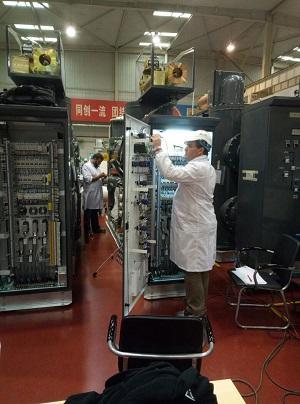

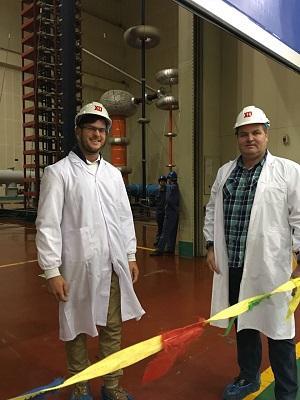
Left – Undertaking Factory Acceptance Testing (FAT) on clients 145kV GIS – Xian – China – January 2017.
Right – Visiting HV Test Equipment Supplier – YangZhou – China – April 2017.
Visiting an HV Test Facility – Xian – China – January 2017
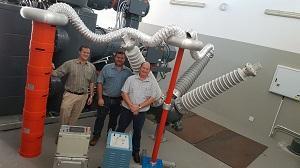
I imported and sold this Resonant Frequency HV test equipment to a client in South Africa.This was the first use of the equipment on a 145kV GIS switchboard which was tested at 235kV.
Experience at EIT:
I decided to read for the Adv Diploma in Applied Electrical Engineering (DEE22) to add some international flavour to the academic section of my CV to complement the impressive and extensive experiential aspects. At the time, I had researched many different avenues to continue with my studies and EIT seemed to be the best value for money solution as well as having a flexible program which was internationally recognised.
As it turned out, the EIT experience was perfect for me as I am extremely busy during the week both during the days on site and the evenings compiling test documentation, drawings etc and the pace and flexibility of the program allowed me to study whilst not interfering with my business commitments.
The online facilities were a pleasure to work with, the lecturers were extremely knowlegable and committed to the teaching/learning process by making themselves available outside of formal sessions to answer questions on the coursework and to engage on matters relating to engineering in general. On the admin side, the course co-ordinator was always available and willing to assist with queries. Moodle was also an excellent tool which served as a platform for all course related content, news, instructions, announcements, results etc. It was my experience that EIT have really hit the mark and set the benchmark for online learning due to
The highlight of the course was also the most challenging – that being the FPE module where we worked in groups to deliver a fictitious rural renewable energy project. What was significant was that the group was spread over 4 continents and many different time zones, yet by using technology were able to co-operate and deliver a solid outcome. Whilst is was challenging, it was a highlight for me because it was a stark demonstration that IT technology has made the world a very small place, and that online collaboration and sharing of ideas can deliver positive outcomes without the need to travel for face-to-face meetings.
Very early in the course, I created a Facebook Group for the class to share news, problems and to raise issues outside of the formal classroom. This proved to be very popular which many of the students registering in the group and making contributions.
Whilst busy on the 18 month Advanced Diploma course, I also managed to complete 2 certificate courses in Power System Protection and IEC 61850 based Substation Automation. Whilst I have expert knowledge in both of these subjects, it is rewarding to now have formal recognition to go with my knowledge and experience. I managed to score 97% and 99% respectively for these 2 courses. My results were also most pleasing in the Adv Diploma course – I am expecting a total course mark in the mid to high 90’s.
EIT in the workplace:
In terms of employability and professional status, my EIT Advanced Diploma in Electrical Engineering has enhanced my status and profile as a commissioning engineer. I have found that I am taken much more seriously now that I have a solid academic qualification behind me to complement my experience. I hope that this will lead to some form of professional recognition which will further enhance my credentials in the industry. I will be investigating this avenue when I arrive in the UK at the end of 2017. I hope to attract a larger range of clients with the enhanced reputation that the EIT Advanced Diploma will bring.
In terms of technical knowledge, to be completely honest, the EIT Advanced Diploma did not extend my technical knowledge much further in the fields which I have worked in for the past 20+ years. This is probably to be expected since the vast amount of knowledge accumulated in a real-world environment accompanied by self-study, cannot hope to be surmounted by an academic course at this level. I felt totally in control of the technical content in the various modules and was often able to offer greater insight into technical matters that some of the course presenters.
There were however some modules where I learned a great deal of technical knowledge, mostly in fields such as power electronics, variable speed drives and energy efficiency which are areas not common to me in my daily work.
The areas where my EIT Advanced Diploma Studies helped tremendously were in the non-technical areas. As a business owner, I learned a great deal about financial, legal and human resource matters in the highly enjoyable FPE module.
I am emigrating to the UK at the end of 2017 where I hope to establish myself as a freelance commissioning engineer in the transmission, distribution and power generation sectors. My aim is to be accredited as a National Grid Commissioning Engineer (TP141 certification) to enabled me to assume lead commissioning engineer roles on 400kV transmission projects.
Training and career goals for the next 5 years...
Short term (1 year)
- In 2018, I want to complete the Graduate Certificate of Renewable Energy with EIT. The renewable Energy sector is an obvious area in which to extend myself as a commissioning engineer. The GCRE will allow me to have the additional knowledge necessary to apply my commissioning experience in these fields.
Medium term (3-5 years)
- Within the next 3-5 years I would like to have established myself as a commissioning engineer in the UK and have proved my competency in the large scale solar and wind energy space. I would also like to have gained my TP141 accreditation.
Long term (5+ years)
- I am also considering the EIT degree courses, but may opt for a mechanical or process control option to extend my knowledge in other areas as I believe I have a well established knowledge base in the electrical discipline.
2017 EIT Outstanding Student Award Winner Runner-up
Course completed: DIA22 Advanced Diploma of Industrial Automation
Date of completion: 25 September 2017
Sales Engineer at Endress+Hauser
We strive to generate outstanding value for our Customers. Endress+Hauser are a number one leader in the Instrumentation, Solutions and Service Industry globally. My Professional background started in 1989 starting my Electrical Apprenticeship for three years continuing with another two years for the Nampak Group. My passion and interests were always in sales, and therefore decided that I needed a change and have since worked as a consultant. Some of my achievements were being Sales Person of the year, and being third place overall within the Endress+Hauser International Group for the sales development progress awarded in Hannover, Germany.
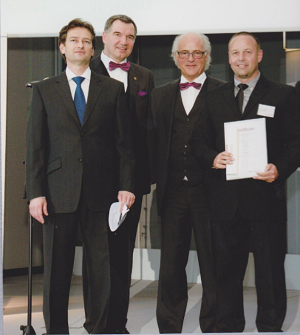
Experience at EIT:
The key to success for an online course is accessibility. I found the course very user friendly and had good supportive and informational structures. The scheduling, readings, slides, videos, software downloads and links all were very helpful and everything was explained step by step. It was most of the time easy to access, but the only issues which I can add that made it sometimes difficult and time consuming was Encryptions on my computer and the ADSL line not always being 100% reliable. The course was quite specific. The course content was great and spot on with my day to day work in the Industry.
The Lecturers were very professional; they were friendly and explained everything in detail asking a lot of questions. I especially found Mr Deon Reynders precise in what he did, explaining in detail and making it very easy to understand, also very helpful and direct. Learning remotely for me was great, and I was able to schedule and do things in my own time. It was also great to plan your schedules and learning without any disturbances. To be honest, Paul Celenza, the course co-ordinator was very good. He was very supportive, helpful and very quick to respond to questions, he made us aware of what was happening and when and what to do at all times.
The technology was very interesting and very up to date with the Labs, software downloads, links and videos. Interactions with fellow students were at times a bit challenging, as meetings had to be scheduled with people at different locations and different work times. At the end we did manage and learned a lot about each other, and communicated as most as possible. There were some misunderstandings at times. Some of my highlights were to set goals and try achieving better grades every time. I found working through the reading material slides etc. and attending the online classes with the Labs very interesting and very user friendly. The only challenges were sometimes, finding time through working, putting your social life aside. Also as I mentioned with the encryptions on my computer which did not always make it easy to download software or to open links took sometimes a lot of time to try and correct. The ADSL line also was not working so great at all the times with bad connections, but other than that I enjoyed the course and got through it. I will still be looking for new courses online.
EIT in the workplace:
- The modules were very interesting, learning from the older technology to the most modern.
- It covered a wide variety which all can be used in my workplace.
- All modules were very up to date with all the environmental, safety, new technology what is currently happening in the world today.
- Everything to better processes, life, economy, safety aspects etc. to look after our world and make it a better place for everyone.
- To be aware of all the dangers and doing Hazops in the industry.
- The knowledge I gained will help me a lot in my workplace.
- It covered a lot and made me more aware when going out to different industries and plants.
- I can include most of it in my day to day work, the networking, wireless systems, Hazops, safety, projects.
- The Ethics in the workplace, how and what to look for and do in meetings.
- How to be a good Leader, attitude etc.
- As I cover most of the Industries the course definitely help a lot and created great awareness.
- Will definitely look at some other courses available at EIT.
Training and career goals for the next 5 years...
Short term (one year):
- To start a business Management or Leadership course.
- Achieve a higher grade at work for example from a C5 to a D1.
- Start a Networking/IT Business Driver development plan.
Medium term (2-5 years):
- To be in a Management position.
- Completed a Business/Marketing Management Diploma/Certificate
Long Time (5 years+):
- To be in a Management Position.
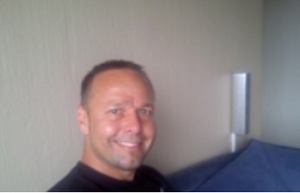
2017 EIT Outstanding Student Award Runner-up
Course completed: Advanced Diploma in Automation Engineering (DIA22)
Date of completion: September 2017
"I have over 10 years working experience on machinery and automated plants as a Maintenance Technician and have been in the job market a few years ago. I have learnt that experience without qualifications only opens a few doors with lower income.
Given my aspirations for more opportunities and higher income, I completed my Electrician trade in 2016 and shortly after began the Advanced Diploma in Automation Engineering. Education has not only broadened my mindset but will open doors to a better career and income potential.
I look forward to the future and plan to start a Degree program as soon as possible.
The course content was in depth and helped with my everyday work. I enjoyed the variety of content but would have liked more electronics.
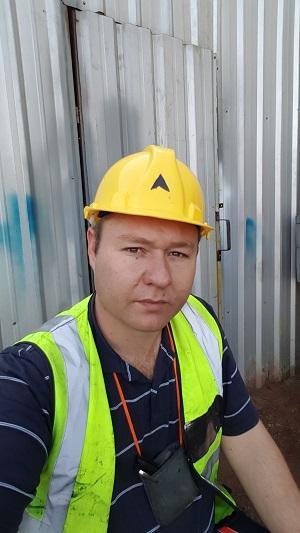
"Online lectures by experienced professionals in their field helped bring the content to life by sharing their personal experiences and being able to watch recordings of lectures was definitely a bonus that I frequently used.
Lecturers responded to my queries in good time and were happy to explain in more detail when asked.
Working in an automated facility and having no one with engineering experience to learn from, I found myself becoming more knowledgeable through this course and lectures experience. Better understanding how the automated systems and instrumentation work has enabled me to not only trouble shoot these systems with confidence but recommend and install new system additions.
"On receiving my Diploma I plan to apply for and move from a maintenance technician role to purely electrical and automation roles within a system integrator or a facility where I can gain experience from accomplished engineers. Following this move and gaining valuable experience I wish to move up to a supervisory position.
I hope to follow my career move by completing a wireman’s license and a few short professional certificate courses specific to Siemens, Allen Bradley or Mitsubishi then begin a BSc course in Automation engineering."
EIT is proud to announce that six of our Online Engineering degrees have been provisionally accredited by Engineers Australia under the Sydney and Washington accords.
- Online BSc degrees in Mechanical, Electrical, Civil and Automation Engineering under the Sydney accord, and
- Online Engineering Master degrees in Industrial Automation and Electrical Systems under the Washington accord.
This means these EIT degrees are now internationally recognized under the International Engineering Alliance (IEA) accords and the various signatories (http://www.ieagreements.org/accords/washington/signatories/).
EIT students can study these courses online, anywhere in the world and receive an Australian Qualification accredited and endorsed by the Australian government, as well as Engineers Australia.
This provisional accreditation is conditionally accorded and applicable to students enrolled in these online courses from 2017 onward. EIT will be applying to Engineers Australia for approval of the campus-based offerings of these same courses in 2018.
With this accreditation in place, the quality and standard of EIT’s degrees are undoubtedly world class.
To view our training schedule, please visit: http://www.eit.edu.au/cms/schedule.
This is a message to EIT students - past, present and future: to those who want to qualify well and to those determined to benefit from their learning experiences generally.
If you are studying with us presently (or have completed your studies) you will understand only too clearly what the challenges are: you are most likely working full time while studying content and concepts which are often difficult and demanding.
As you juggle these competing priorities it is not so surprising that aspects of your studies are relegated to the back burner. Despite this, I am going to encourage you to squeeze everything you can from can from your course. To do this the following two reminders may help.
Firstly, always keep in mind why you chose to embark on the course. Was it to help promote your career? Or broaden your skill base? Was it because you lacked the specific skills that work was demanding from you? Or because you needed some professional development to help you keep pace with the changes in your industry?

Secondly, don’t forget the investment you made, or are making? Not just the financial one, but the one involving your time - an extraordinarily precious commodity.
Feedback from lecturers on student engagement is often heartening. When it isn’t we become concerned. When students are fully engaged in the learning process it is, without a doubt, the key to improving their outcomes and generally results in higher levels of student satisfaction.
One of our longest-serving lecturers, John Lawrence, has adjusted the format of a number of his live webinar sessions in an effort to address this issue. He has found that instead of sticking strictly to his deadline of one hour, his longer sessions include demos and, with the extra time, student interaction becomes a priority. Students are not compelled to stay beyond the hour, but those that do tend to be, says John, “pretty complimentary”.
On the other side of the coin, John has found that students who miss their live webinars (and fail to adequately catch up with the recordings) do poorly in their assignments – often on the practical components. Weakness here, in applied learning, means that the knowledge gained by students remains largely theoretical – negating the true intention of EIT qualifications.
There is another important factor that contributes to the learning experience of students and it is one that John urges his learners to remember: “the objective (of studying) is for a greater and keener understanding ...” He is saddened when he realises that a student’s sole purpose is to pass an assignment.
Education is valuable in itself, but we must remember that it can be so much more. Michelle Obama, American lawyer and writer, said about her education:
“Through my education, I didn't just develop skills, I didn't just develop the ability to learn, but I developed confidence.”

To our students past, present and future: we, at the Engineering Institute of Technology wish you everything of the best for 2018. Whenever you have the opportunity to learn - formally or informally - do so actively and engage in it fully.
It would not have been a pleasant break at the end of 2017 for those working in the power industry. General Electric (GE) is retrenching 12,000 employees from their electrical power division; it equates to 18 percent of their workforce. The European branches of GE Power seem to be the hardest hit; Switzerland and Germany are losing the most employees.
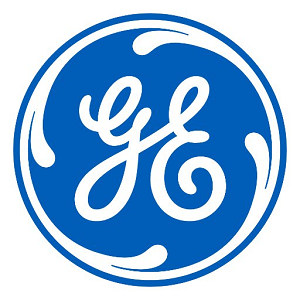
The company initially made its fortune when Thomas Edison’s idea for the incandescent light bulb was realized. In November 2017 - triggering the end of an era for the company - they announced that the light bulb division would be closing.
The move will purportedly save them $1 billion in 2018.
GE Power Chief Executive Russell Stokes, in a statement, said:
“This decision was painful but necessary for GE Power to respond to the disruption in the power market, which is driving significantly lower volumes in products and services.
GE is pointing to the energy industry’s ongoing move from fossil fuels to alternative renewable energy for its current woes. It is, however, not the only power company experiencing a downturn. Siemens AG recently let 6,900 employees go and Siemens has reduced its global workforce, in its power and gas divisions, by 2 percent.
Siemens Management Lisa Davis said:
“The power generation industry is experiencing disruption of unprecedented scope and speed. With their innovative strength and rapidly expanding generation capacity, renewables are putting other forms of power generation under increasing pressure.”
General Electric also appointed new CEO John Flannery in an attempt to steer the company away from the despair it had witnessed during 2017. His first move was to buy 60,000 of GE’s share.
The company, unfortunately, became the worst-performing stock on the Dow Jones Industrial Average last year - a shocking decline for a blue chip stock. The stock had fallen by more than 42.2 percent since the beginning of 2017. The forecast for 2018 doesn’t look any healthier.
How to remain relevant
Cross-skilling, up-skilling and remaining relevant in your industry, which may very well change in the future, is critical. As the world enters the fourth industrial revolution we all need to become more nimble and remain watchful; all opportunities to professionally develop must be considered.
For example, if a worker in the manufacturing sector does not learn the principles of a disrupting technology, like rapid prototyping (3D printing); it may indeed be to his detriment. By keeping an eye on such technologies and ensuring his skills broaden - in line with the demands of his industry - he is much more likely to remain in demand.
Competence in a career that is subject to change is always difficult. With the right tools, however, it is doable. Perhaps, John Lorriman says it best in his book ‘Continuing Professional Development: A Practical Approach’: “You own the world’s most powerful computer -- your brain.”
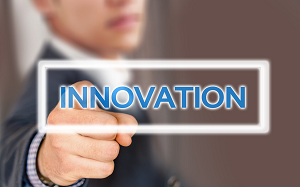
Works Cited
Merriman, Editing by Jane, et al. “Siemens to Cut 6,900 Jobs to Tackle Flailing Turbines Business.” Reuters, Thomson Reuters, 16 Nov. 2017, www.reuters.com/article/us-siemens-power-restructuring/siemens-to-cut-6900-jobs-to-tackle-flailing-turbines-business-idUSKBN1DG257.
Revill, John. “General Electric to Cut 12,000 Jobs in Power Business Revamp.” Reuters, Thomson Reuters, 7 Dec. 2017, www.reuters.com/article/us-ge-jobs/general-electric-to-cut-12000-jobs-in-power-business-revamp-idUSKBN1E11GU.
Dear Colleagues
I am always humbled by many people’s pride in what would initially appear to be a horrific job. These range from those who clean up often horrific levels of sewage and waste / work with toxic chemicals / operate on remote and harsh mine sites. You see the obvious level of pride and skill in their work coupled with a tremendous camaraderie and most importantly – a purpose in what they are doing.
And then I see some engineering professionals - often well paid with what appears to be good jobs - who absolutely hate what they are doing and make sure everyone knows how dissatisfied they are.
Why do some hate and others love
I thus puzzle why there are differences in how people approach their work. After all – it is a huge part of your life and it is best to either ‘chuck it in’ or re-assess how you approach it. A few modest suggestions on building meaning into your job.
Tie your Work to a Great Service
When you can clearly see your work leading to great outcomes for the greater good; you can be inspired to put more into it. It is thus vital to put your job into the context of what it is ultimately helping with in terms of service.
For example, we get a huge number of positive comments on a weekly basis from those who have been enriched by the courses they have attended at our college – these comments include students who have achieved promotions/enriched their communities with improved infrastructure (power stations/medical clinics) and indeed have saved lives with their acquired know-how and skills. The regular feedback of comments has definitely inspired everyone at the college – no matter what their job level - to see their jobs as considerably more meaningful than a simple nine to five activity.
Pursue Excellence in one’s Job
By insisting on focusing on a job to the highest level – you can certainly make the work considerably more meaningful and hopefully enjoyable. For example, ensuring that you are familiar with all aspects of the job and know how to deliver to the highest quality and that you are ‘top of your game’; can give huge satisfaction. Putting together strategies to improve the overall quality of the job outcomes can also be hugely positive tasks.
Work in Partnership as a Team and connect with others
Working in a team and connecting with others can be an enormous boost to one’s happiness and sense of fulfillment in the work at hand. Other strategies include understanding the contribution of others in your team as well as mentoring those starting off in their jobs. After all – it is all about people.
Remember the Nuts and Bolts of What the Job Gives you
One normally takes on a job for reasons which are quite boringly obvious but we forget this. Such as you need to earn money to pay the bills and put food on the table. Always remember that this is a key outcome of the job.

As Jim Collins remarks: It is impossible to have a great life unless it is a meaningful life. And it is very difficult to have a meaningful life without meaningful work.
Thanks for a thought provoking article by John Coleman of the Harvard Business Review (Dec.29th, 2017)
Yours in engineering learning
Steve
Mackay’s Musings – 2nd January’18 #668
125, 273 readers – www.eit.edu.au/cms/news/blog-steve-mackay
The people of London, England, are officially one year away from using a new underground railway. Crossrail is a new railway that links up to the renowned Elizabeth Line; since 2009 the teams involved have been working around the clock to make it happen.
Engineers behind the project are calling it the most “ambitious infrastructure project since the Industrial Revolution”. Upon completion, Crossrail will be 118 kilometers (73 miles) long. 10 stations are also being constructed. By December 2018 the railway will open to the public - after an investment of US$20 billion.
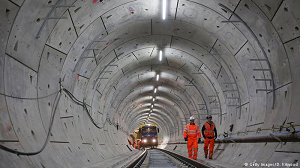
For all Britain's engineering successes, there are some aspects of the industry that require consideration. For example, Britain has the lowest number of female engineers in Europe.
The Crossrail project, however, has created opportunities for female engineers too. In fact, the Daily Mail reports that a third of the engineers attached to the project are female. Another impressive fact is that Crossrail Limited will have created more than 1,000 apprenticeships during the construction of the railway.
The female engineers attached to the project have been given the nickname the ‘Girlpower Tunnel Gang’.
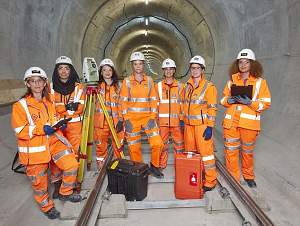
Rachel, a 43 year old civil engineer working on the railway told the Daily Mail:
“When I was a little girl I was utterly ignorant of engineering. It never crossed my mind that engineering was a masculine industry. I grew up in a family of feminists where you do what you want to do. Now, I do get people asking me whether I boss lots of men around, which I don’t.”
The dedication to the project has been remarkable too – those involved will work through the festive season and New Year.
Another of the female engineers - who moonlights as a beauty blogger - spoke about the misconceptions some people have about females in the engineering industry. She said:
“People don’t expect someone like me to be an engineer because I like make-up and beauty. I don’t put my full make-up on all the time to go to work - I’m not going to get up an hour early just to do that. People might think if you look a certain way you are not serious, but I have studied hard.”
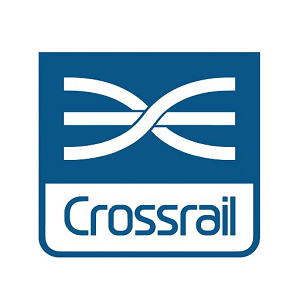
The project employed eight tunnel boring machines (TBM); each one at a cost of approximately US$13 million. These machines work around the clock and requires up to 20 people to operate them. Andrew Wolstenholme, the CEO of the Crossrail project spoke to Deutsche Welle, saying:
“I’ve travelled in many different continents in my career, and I see British engineering sitting right at the forefront. We’ve always been good at architecture, at engineering. I think we’ve put people and social issues at the heart of Crossrail, so we’ve attracted now more than 700 apprentices. These are young men and young women. I say young women because 30 percent of our apprentices are female, which we’re very proud of. They come from all sorts of different backgrounds, giving people the opportunity, some from disadvantaged backgrounds, to have engineering as their first choice in the UK.”
Social issues, and putting people first aside, the project still needs to meet deadlines and do it without overspending. Wolstenholme says everyone on the Crossrail project is disciplined and has the expertise to finish the project. With London’s growing population rates, the new railway is going to be a godsend for minimizing congestion in the city and reducing travel times.
Project Manager Camilla Barrow, a team leader in charge of 40 other employees at Crossrail, said:
“Having more women engineers is better for everyone - if you have diverse people on a project, you will get better ideas. If everyone thinks the same, you're less likely to get innovation. When you have a huge project like Crossrail, you need that creative thinking. For instance, we created from scratch a unique drilling rig - and it was designed by one of our young engineers.”
Works Cited
(www.dw.com), Deutsche Welle. “Tunnel Vision: Inside London's New Subterranean Railway | Business | DW | 20.11.2017.” DW.COM, www.dw.com/en/tunnel-vision-inside-londons-new-subterranean-railway/a-41444842.
Ruth Sunderland City Editor For The Mail On Sunday. “The Girlpower Tunnel Gang! Meet the Female Crossrail Engineers behind the Biggest Construction Job in Europe.” Daily Mail Online, Associated Newspapers, 9 Dec. 2017, www.dailymail.co.uk/femail/article-5163163/Meet-female-Crossrail-engineers.html.
By now you might have noticed that voice recognition hardware and software are growing exponentially. Companies including Google, Amazon, and Apple are developing technologies that allow humans to access the internet and control connected devices by using their voices.
The introduction of products such as Amazon’s Alexa and Google’s Home has piqued the interest of consumers. They can envision the benefits of these emerging virtual assistants and so can businesses.
Even Microsoft’s Windows is incorporating voice into its product range. For example Windows’ virtual assistant, Cortana, speaks up and guides a user when installing a Windows operating system.

The voice-install method occurs by default upon a clean install of the operating system. Consumers can, however, opt out of the voice-input installation method if they do not want to converse with the assistant.
Engineers are being met with the task of integrating voice into many of the projects they are involved with. It goes without saying that proficiency in artificial or machine intelligence is becoming critical to those working in the engineering industry.
According to a recent report by Research and Markets, just the Global Voice Recognition Market is to reach a market size of $126.5 billion by 2023.
The Chief Technology Officer for Amazon Web Services, Werner Vogels, has said that the future of technology must be human centric instead of machine centric. Utilizing voice is one way of ensuring technology relates more ably to a human user.
To this end Amazon has announced Alexa for Business. These are smart devices that can be peppered throughout the workspace to encourage efficiency and keep a team on track.
Amazon has made the SDK (software development kit) available for the AVS (Alexa Voice Service). With this at their disposal engineers are learning how to embed voice recognition systems into their future designs.
For engineers who want to hear their daily news and other content, these smart audio devices are perfect. And the future of these nifty creations, thanks to the engineers behind the assistants: smaller and more affordable versions.
'
Works Cited
McLean, Asha. “The Future of Digital Will Be Human-Centric and Voice Will Reign Supreme.” ZDNet, ZDNet, 30 Nov. 2017, www.zdnet.com/article/the-future-of-digital-will-be-human-centric-and-voice-will-reign-supreme/.
“Voice Recognition Market - Expected to Reach $126.5 Billion by 2023 - Research and Markets.” Voice Recognition Market - Expected to Reach $126.5 Billion by 2023 - Research and Markets | Business Wire, 13 Dec. 2017, www.businesswire.com/news/home/20171213005500/en/Voice-Recognition-Market---Expected-Reach-126.5.
The fourth industrial revolution is here, making us a part of the Internet of Things (IoT), whether we like it or not.
Artificial intelligence, big data, data generating sensors, robotics and automation are the kinds of innovations that are currently disrupting and indeed benefiting industry. One issue which is facing increasingly interconnected and intelligent enterprises (filled as they are with complex technology), is the shortage of employees skilled enough to use and manipulate these new technologies.
Zebra Technologies is intrigued – they are building an Intelligent Enterprise Index to track the advancement of IoT-connected companies. According to their index, 62 percent of companies are on track to implementing IoT-initiatives throughout their establishments. It also confirmed that 42 percent of enterprises will pay US$3.1 million per year on IoT.
With the increasing demand for skilled and adaptable or nimble employees there I some concern that higher education providers may not ably keep pace with the needs of companies which embrace the IoT.
Further exacerbating the situation, and manifesting itself in students when they are relatively young, is a growing disinterest in STEM (Science, Technology, Engineering, Mathematics).

P.K. Agarwal, the Dean of the Northeastern University Silicon Valley thinks more can be done. He writes:
“I believe we should look to those who lack traditional STEM backgrounds. By taking someone with a liberal arts or humanities background, and opening up opportunities for them in development or IT, we can create some of the strongest candidates possible.”
The skills needed
A country that is embracing the future and trying to stay ahead of the curve is India. Their education institutions are attempting to build courses that will adequately prepare students for the demands of work in a world characterized by the Fourth Industrial Revolution.
IoT India Magazine put together a list of ten elements of IoT that technologists and engineers, should be focusing on:
|
Enterprise necessities |
Knowledge needed |
|
Embedded systems |
Electronic or electromechanical devices. I.e. Sensors within systems. |
|
Networking |
Communication hardware: bluetooth, Wi-Fi |
|
Computer programming |
Writing embedded code, perfecting data transfer. |
|
Machine learning |
Understanding artificial intelligence (AI), building self-learning computers |
|
Big data |
Analysis of enormous amounts of data created by sensors and automated processes. |
|
Network security |
Cybersecurity: the protection of valuable data |
|
UI/UX Design |
Creating user interfaces (UI) and user experience (UX) designs so that all members of the enterprise can see and understand the IoT processes. |
|
Mobile Development |
Controlling IoT equipment with mobile devices; allowing access via remote applications. |
|
Cloud computing |
Keeping backups securely in the cloud. Automating extensive data computation in the cloud. Making it available for analysis across enterprises. |
|
Soft skills |
Written and verbal communication skills. Humanities and liberal arts influences. |
Works Cited
“IoT Skill Shortage Ahead | EE Times.” EETimes, www.eetimes.com/author.asp?section_id=36&doc_id=1332655.
Magazine, IoT India, et al. “Top 10 Skills Needed to Be an IoT Professional.” IoT India Magazine, 24 Mar. 2017, iotindiamag.com/2016/07/top-10-skills-needed-iot-professional/.
Tire development has always formed a large chunk of the United States’ National Aeronautics and Space Administration’s (NASA) research. After all NASA has to put robust tires on the rovers they use in space. In fact the exploration of an arid, somewhat unpredictable landscape is very much dependent on good tires.
Space exploration has advanced alongside the growing capabilities of technology. With new landscapes to be explored the tires needed to be more versatile and durable.

Despite this, in 2013, after some extensive traveling on the surface of Mars, the engineers behind NASA’s Curiosity Rover noticed holes and tears in the vehicle’s aluminum wheels. By 2017 NASA was reporting much further damage, with engineers estimating that the wheels were 60% spent.
NASA realized that if they ever intended to send humans to Mars (with reliable transport around the planet); they needed to go back to the drawing board and engineer a tire that could go to Mars and beyond.
Tire evolution
The aerospace engineering world has seen an evolution of tires fitted to lunar and Martian exploration vehicles. The Russian vehicle, Lunokhod, in 1970, used mesh-like wheels fixed onto spokes - reminiscent of a bicycle.
The MET-ROVER had nitrogen filled inner-tubes and were manufactured by Goodyear. The Lunar Roving Vehicle, which famously went to the moon on the Apollo 15 mission, also utilized a flexible wire mesh.
The flexible wire mesh concept was further developed in the NASA Glenn Research Center by engineer Vivake Asnani. With assistance from Goodyear, in 2000, they created the ‘Spring Tire’ - an airless tire created with coiled steel wires criss-crossed to create a mesh.
NASA’s engineers believe the Spring Tire is perhaps their best bet for the next vehicle that goes to Mars. The engineers have focused their energies on creating prototypes to improve its ‘traction in soft sand’, increase its durability and reduce its weight.
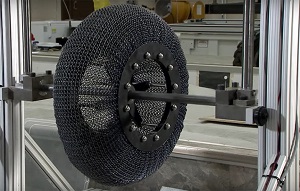
A new tire is born
At NASA’s Jet Propulsion Laboratory (JPL), new mesh-tire prototypes have been undergoing tests; the simulations mimic the conditions on Mars.
The difference between the old mesh tires NASA has used and these newer prototypes is all in the material: titanium, with a unique atomic structure. The structure is less susceptible to pressure and stress. According to the engineers at NASA Glenn, the titanium based tire is thirty times more durable than tires before it.
As a result, the engineers over at NASA have developed a “memory alloy tire”. A tire that returns to its original form once it has come into contact with something that has caused it to deform. The researchers write:
“There are three major benefits to developing high performing compliant tires that are capable of performing in a Martian or Lunar environment. First, they would allow rovers to explore greater regions of the surface than currently possible. Secondly, because they conform to the terrain and do not sink as much as rigid wheels, they can carry heavier payloads for the same given mass and volume. Lastly, because the compliant tires can absorb energy from impacts at moderate to high speeds, they can be used on crewed exploration vehicles which are expected to move at speeds significantly higher than the current Mars rovers.”
The wheels are being perfected in time for a mission to Mars planned for 2020. NASA will send Curiosity 2.0 to the red planet - an almost identical rover to the Curiosity that is currently on the planet. But it will have six newly engineered wheels (and a few other new trinkets).
Works Cited
“Reinventing the Wheel.” NA http://bgr.com/2017/11/26/nasa-airless-tire-no-flat/
Instead of entrusting a handful of engineers to design and build, why not open it to a world of engineers, or those who are enthusiastic about all things engineering?
Thanks to low-cost cloud computing, it is all possible. Collaborative engineering design was seen as far back as 2008 in the automotive industry, the company involved was Local Motors.
Founded in 2007 in Phoenix, Arizona, Local Motors became an open-source motor vehicle design and manufacturing company.

Source: Local Motors | Image: The first 3D printed car - Strati
After seeing how Ferrari, GM and Tesla went from design to manufacturing, founder of Local Motors, Jay Rogers, came up with a plan to get vehicles designed and to market more quickly. They opted for designing the car of the future through ‘co-creation’, using collaborative teams from all over the world.
They originally employed student designers, but these resulted in various setbacks. The founders then decided on crowdsources designs from teams around the world that had the necessary expertise. The teams included engineers, car enthusiasts, innovative minds and creative professionals.
Those designs that met the CAD requirements for 3D printers and deemed the best car designs were up-voted by the ‘community’.
In 2008, the company and its many co-creators around the globe designed the world’s first crowdsourced car. Once the winners were picked, they began printing their first car; the Strati was born. Local Motors explained that it only took two-three-day weekends to manufacture the car.
Once a car is designed the community can opt to buy the car. Local Motors then builds a micro-factory in a town or city and begins the manufacturing process. By 2014, the company had eighty-three employees and three manufacturing micro-factories.
According to Sam Ismail’s book ‘Exponential Organizations’, the traditional car manufacturing company spends US$3 billion bringing a new car to market, whereas Local Motors might spend US$3 million. (Although traditional car manufacturers do push out more cars per annum.) Nonetheless, an improvement in organizational structuring and manufacturing could eventually drive the cost of production down for traditional vehicle manufacturers too.
Local Motors recently announced its latest mobility project; a 3D printed bus named Olli. The bus is a self-driving vehicle powered by IBM’s Watson. The company uses its micro-factories to manufacture the buses.
Continued crowdsourcing
Local Motors’ micro-manufacturing processes soon began to influence some of the largest and oldest stalwarts of engineering.
In 2014, General Electric (GE) saw the benefit to Local Motors’ crowdsourcing efforts and wanted in on the fun. GE linked arms with Local Motors in a partnership that would see a community of “engineers, scientists, fabricators, designers and enthusiasts” co-create items with GE that would eventually go to market.
GE Executive Director of Global Innovation Steve Liguori said:
“At GE over the past years, we've refined our approach to innovation, focusing on R&D as well as co-creation, open collaboration and partnership, which has allowed us to engage new audiences; a new era of manufacturing is dawning -- and with Local Motors, we are pioneering the future of work, fast tracking a new model for the manufacturing industry, and improving and expanding GE’s product offering to better meet future customer needs.”
General Electric appliances - pertaining to the cooking industry - were co-created by an open-source, collaborative network of engineers and other professionals. This network, known as FirstBuild, utilizes rapid prototyping. They create prototypes from the most up-voted items designed by the community of contributors and then run tests on them.
Another crowdsourcing service engaging freelancing engineering professionals is CADCrowd . Entities can pick their favorite items from a list of freelancing engineers or engineering teams who are looking to score money from their designs.
Those who are willing to pay are looking at engineering designs for a range of uses, from wringing water out of a sponge mop to step ladders.
Works Cited
“Blog | Local Motors.” Launch Forth, launchforth.io/localmotors/blog/.
“GE, Local Motors Partner to Pioneer New Model for Manufacturing Industry · Local Motors.” Local Motors, localmotors.com/press-release/ge-local-motors-partner-pioneer-new-model-manufacturing-industry/.
Exponential Organizations, exponentialorgs.com/.
While Darryl Morrison is currently a Detail Draughtsman in the bulk materials handling industry, he has his eye on becoming a professional engineer.
I asked him what he did for Rula Bulk Materials Handling:
“We design and detail bulk material handling plants from concept to commissioning. I ensure that the designs I receive from the engineers are made into shop drawings so that the various workshops can fabricate the structural steelwork, machine mechanical components, process piping, and bend rebar.”
He mentioned that he loves seeing his drawings come to life on site.
Darryl’s first job was as a Production Plant Operator for Western Platinum Refinery (WPR). It was here that he learned about processing platinum group metals (PGMs) and acquired skills in control instrumentation.
He worked in the Primary Separations Department which installed its first plant that was 90% automated – this meant putting a lot of faith in the instruments on-site when working in the control room! During his time here he managed to study part time, earning his Engineering Draughting Diploma.
With this diploma he started with a civil and structural consultancy company named HBS AFRICA. Here Darryl learned about industrial structural steelwork and construction management.
He then moved on to one of the world’s leading engineering professional services firms, WSP. He worked as a draughtsman within the Industrial Division (specializing in electrical and mechanical engineering).
At WSP Mr Geoff Carter became Darryl’s mentor. He was able to explain how the disciplines of engineering plug into the WSP Industrial Division and at the same time Carter inspired him to pursue his ambition to become an engineer.
During his part-time work for IGEZI Electrical Contractors he became an accredited electrician and in a similar vein completed the Advanced Diploma in Electrical Engineering with the Engineering Institute of Technology (EIT).
He is currently enrolled on a Bachelor of Science Degree (Electrical Engineering), also through EIT.
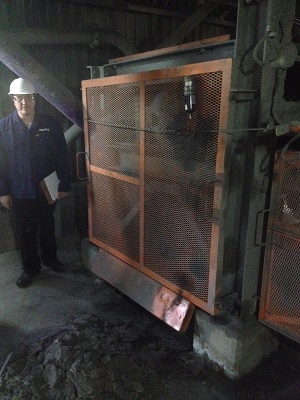 That other job
That other job
As a new father Darryl is reading Dad Book, by South African author Craig Wilkinson; he recommends it for anyone facing fatherhood.
With a child to consider and plan for Darryl reflected on what Secondary School Scholars/Young Adults should study in the future:
“I would highly recommend that young adults study towards a career in the STEM industry. I think a lot of youngsters tend to worry about the Mathematics component. Mathematics is only one portion of engineering. The STEM industry is a vast and rewarding industry. There will come a time when a new generation of youngsters comes through the ranks. I hope that I can transfer the knowledge which I have gained over the years to the next generation.”
Finally, Darryl summarizes that a combination of hands-on experience, good mentors and excellent qualifications (through institutions which facilitate life-long learning), make the possibilities endless.

It is almost that time of the year again, the moment that sees out the old and welcomes in the new, on New Year’s Eve. In the seconds that take 23:59 in 2017 to 00:00 in 2018, bursts of fiery light will appear in the night skies around the world as displays of fireworks are triggered.
Some of the world’s grandest fireworks happen on Australia’s Sydney Harbor, on the United Kingdom’s London Eye, on France’s Eiffel Tower in Paris, and on Brazil’s Copacabana Beach in Rio de Janeiro, to name a few.
Nothing dazzles crowds quite like fireworks displays. They are, after all, a marvel of chemical engineering. There is a visceral excitement felt by many when fireworks burst into the sky as a New Year dawns.
However, for visually impaired members of our global population, enjoying a fireworks display is limited to the reverberating explosions alone. The engineers and researchers at Disney Parks and Resorts have worked to find a solution.
The company is world renowned for its firework displays; in fact they are the largest consumer of fireworks in the world. A former Product Designer at Disney Consumer Products, Ben Suarez, says Disney uses up to US$50,000 of fireworks per show at their resorts. It is estimated that the resorts collectively blow up $50 million worth of fireworks every year.
Feeling Fireworks
Researchers at Disney are developing a technology that would allow visually impaired patrons to experience the fireworks at their parks in a new way; by feeling them. A flexible screen is set up, with water jets positioned behind it. By placing their hands against the screen they feel a representation of a firework exploding outwardly.
To further improve the experience, a Microsoft Kinect camera array is set up, for the purposes of tracking users’ hands. Once a user's hands are up against the flexible screen, the jets are activated through the Kinect sensor and a personalized ‘fireworks explosion’ is performed for the user.
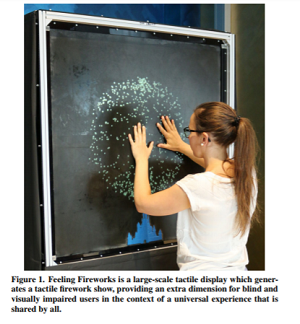
Disney’s researchers are experimenting with a variety of nozzles on the water jets to produce varied patterns and thus a breadth of tactile experience. Using an Arduino-based computer, the engineers control the amount of water the pump emits and can control the direction of the nozzles. The researchers have also found that they can produce the experience inexpensively. They write:
“Our approach is low-cost and scales well, and allows for dynamic tactile effects to be rendered with high spatial resolution.”
The rise and development of haptic technology will enable an increasing number of tactile experiences in the near future. Haptic feedback is something engineers are embedding in technology to make humans feel like their interactions with technology are more genuine.
Disney believes that the technology could be adapted to other industries. The researchers write:
“Beyond the specific application, the technology represents a novel and cost-effective approach for making large scalable tactile displays, with the potential for wider use.”
Disney’s investment in fireworks goes further. According to former Disney & NBC Product Designer Ben Suarez the company has invested millions into “developing new fireworks that left minimal amounts of smoke”, after the smell of their many fiery displays agitated crowds.
A festive season is, after all, for everyone. It is commendable that Disney has used their engineering expertise to ensure this gladness is spread a little more widely.
Works Cited
“Feeling Fireworks.” Disney Research, www.disneyresearch.com/publication/feeling-fireworks/.
“Quora - A Place to Share Knowledge and Better Understand the World.” Quora - A Place to Share Knowledge and Better Understand the World., www.quora.com/.
The conference focus this year: Students, Quality and Success, ran over three days, from the 29th November to the 1st December 2017 and was attended by 800 delegates, of which almost 100 were higher education students.
Steve Mackay, our Dean, and Caroline Patterson, our Compliance and Accreditation Manager, were selected to present their paper entitled: Australia’s first hands-on online engineering master degree. The graduation of our first cohort of Master of Engineering (Industrial Automation) students was deemed significant by the TEQSA presentation selectors.
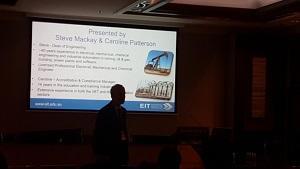
Steve and Caroline’s presentation was, however, also attended by a number of sceptics, “You can’t teach engineering students fully online!”, “How do they get their hands dirty?” Steve explained briefly that the Internet of Things has resulted in the connectivity of engineering tools; a situation which has enabled competent applied learning via remote laboratories and simulation software, as everything is now connected. For many, however, the ‘winds of change’ cause a slightly different form of disquiet; they sense that traditional approaches to learning may be undermined and therefore threaten their jobs too.
Caroline’s presentation was structured around the feedback from the master graduates and our current master students on both the industrial automation and electrical engineering degrees. As part of this she mentioned that a large proportion of students rate online learning more highly than face-to-face. An attendee was astounded and pressed for qualitative support to this assertion.
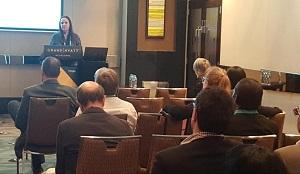
EIT students, past and present (engaged in any EIT program), it would be great to receive your comments. This is how Caroline explained it: she described how the live online platform we use allows for student-lecturer interaction which encourages students to engage in the learning process. She also mentioned that the interaction was less threatening; an increased level of anonymity eliminates the feeling of ‘being put on the spot’. She confidently added that despite the compulsory attendance at the live webinar sessions, the platform meant that both working and remotely-based students were able to acquire a qualification without the upheaval of campus attendance.
Separately Steve expressed enormous pride in the master degree thesis projects that were submitted, commenting on their high standard and relevance to industry. He explained that this was in large part due to the fact that students are working while they study. He admitted that in many ways they have an unfair advantage over students who don’t have this exposure to industry, and indeed, life.
And finally, the audience was able to appreciate the reach of the online platform: apart from our internationally-based lecturing team, our students come from 140 countries. For various reasons there are countries that cannot satisfy student education needs; online learning has resolved this deficiency in many instances. Offering a solution is particularly poignant when we receive word that our graduates, scattered around the world, have been promoted and received salary increases with their qualifications.
Our congratulations and thanks go to our Master degree graduates; we wish you everything of the best. Please keep in touch.
Warning for parents this Christmas: Net-connected gadgets
The UK’s data regulator has put out a warning detailing the risk that net-connected toys and gadgets could pose on home security.
According to deputy information commissioner Steve Wood, many toys cannot be updated to fix bugs and have such poor security that they could be used by hackers as a way to break into a home network.

Image: BBC
Therefore it is advised that anyone thinking of buying a net-connected gadget should thoroughly research its security and check its privacy settings before wrapping it up to give to someone this Christmas!
The world’s first demountable stadium
The stadiums built in different countries to host the huge event of the Olympic Games often do not have much use afterwards. To remedy this wastage, Qatar has unveiled plans to build the world’s first demountable stadium, made of shipping containers!
These containers will hold things such as removable seats, concession stands and toilets – but the best thing about all this is that the stadium can be dismantled once it is no longer required. It is simply deconstructed and stored for future use, or converted into a smaller utility.
With a seating capacity of 40,000, the stadium is expected to be completed in 2020. Check out the following video to see how the demountable stadium will be put up and how it will come apart again.
The Earth is round…or is it?
A man in California is setting out to prove his idea that the Earth is not actually a sphere, and instead, flat. To prove his claim, he is launching himself at 500 miles per hour in a homemade rocket, several miles above the Earth’s surface. He received help from his supporters to build the rocket, but won’t be able to test it prior to the launch.
Fundraisers have been set up to support the building of the rocket, which has even attracted the attention of American rapper B.O.B; who is now a large supporter of the research into the project.
Watch the below video to learn more about the launch...
World’s first electronically smart pill: Abilify MyCite
The world’s first electronically smart pill, Abilify MyCite, has been approved by the American Food and Drug Association (FDA). The pill has a tiny sensor that is no bigger than a grain of sand, and will allow patient information to be gathered and willingly given to doctors and caretakers.
The data from the pill is transmitted by a patch on the patient’s left rib, which connects to a smartphone via Bluetooth. The smartphone can then display information such as the time the pill was taken, the dosage and the patient’s activity levels.

Image: Proteus Digital Health
It is remarkable how a physcially tiny tablet can be developed into a high-tech piece of medical equipment that can improve the lives of patients and allow for higher accuracy with data collection. However, it is inevtiable with the fast paced world of technology that privacy risks become a concern with devices such as these, and we must work to determine a boundary between technology and ethics.
Works Cited
BBC. 24th November 2017. Warnings over net-connected Christmas gadgets. BBC UK. http://www.bbc.com/news/technology-42114878
Vaqar, Ali. 29 November 2017. World’s First Shipping Container Based Removable Stadium To Be Made In Qatar. Wonderful Engineering. http://wonderfulengineering.com/worlds-first-shipping-container-based-removable-stadium-to-be-made-in-qatar/
Vaqar, Ali. 23 November 2017. This Man Will Launch Himself In A Homemade Rocket To Prove That Earth Is Flat. Wonderful Engineering. http://wonderfulengineering.com/this-man-will-launch-himself-in-a-homemade-rocket-to-prove-that-earth-is-flat/
Vaqar, Ali. 16 November 2017. World’s First Electronic Smart Pill Approved By The FDA. Wonderful Engineering. http://wonderfulengineering.com/worlds-first-electronic-smart-pill-approved-fda/
Andrew Grant (46) is an International Specialist Electrical Contractor, a business owner and a commissioning engineer. Despite these successes he was looking to remain relevant in our ever-changing world; he recently graduated with an Advanced Diploma of Applied Electrical Engineering. His studied through the Engineering Institute of Technology (EIT) and has now won the EIT Outstanding Student of the Year award for 2017.
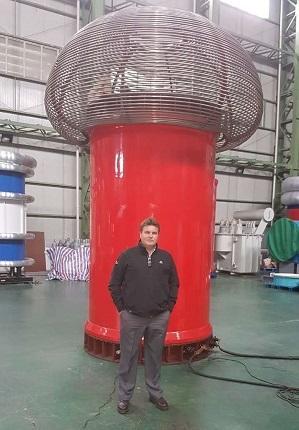
Andrew has been involved in the electrical transmission and distribution sector for more than 25 years. For the past 16 years he has been running his own company, AMG Power Systems, which he founded in 1999.
AMG Power Systems is based in Durban, South Africa; it specializes in the installation and commissioning of primary and secondary equipment in substations, power stations and in industry.
Andrew’s daily responsibilities involve working with equipment such as switchgear, transformers, instrument transformers, GIS, protection and control equipment, SCADA networks, batteries and charger systems.
He says the electrical industry, specifically in the heavy current field, is facing a shortage of qualified and competent people. He asserts that the industry needs people to design, commission, operate and maintain power networks in the near future. And those students need to be aptly trained to do so.
Balancing work and study
Andrew was looking for a solution to the conundrum of running a demanding business and needing to upskill at the same time. He said:
“As it turned out, the EIT experience was perfect for me as I am extremely busy during the week both during the days on site and the evenings, compiling test documentation, drawings, etc and the pace and flexibility of the program allowed me to study whilst not interfering with my business commitments.”
Incredibly, Andrew also completed 2 online certificate courses, each 3 months in duration, through EIT during his 18 month Advanced Diploma course. He finished the Power System Protection and IEC 61850 based Substation Automation courses successfully.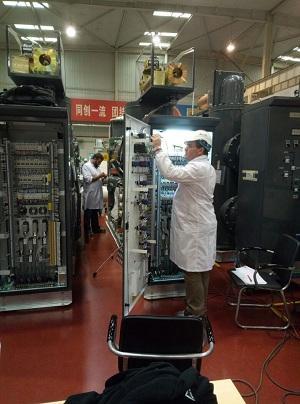
Andrew believes that the qualification, together with the professional development courses, contributed to his increasing self-confidence in his business. The international standing of the qualification (it is recognized under the Dublin Accord) was an added benefit as he intends to immigrate to the United Kingdom.
Andrew is looking ahead and to the future of the industry: in 2018 he intends to enroll on EIT’s Graduate Certificate of Renewable Energy (GCRE) and further himself as a commissioning engineer in the UK with proficiency in large scale solar and wind energy technologies. He says:
“The Renewable Energy Sector is an obvious area in which to extend myself as a commissioning engineer. The GCRE will allow me to have the additional knowledge necessary to apply my commissioning experience in these fields.”
When reflecting on his online studies he tells of something he initiated which helped unite his virtual class: a Facebook group. It proved popular as the students in his cohort were able to share news, consider problems and raise issues outside of the formal online classroom. This is a remarkable initiative because it can be lonely studying online, even with the live platform of learning employed by EIT.
Andrew expressed his belief that experienced industry practitioners need to assist those new to it. He also has a heart for helping others achieve an education. As the lead commissioning engineer, on more than 30 substation projects over the past 10 years, he has mentored 12 young students in the industry. He has also encouraged them to study further, providing them with the opportunity to complete diploma courses.
Andrew Grant is an impressive example of someone who has enormous industry experience, but who understands that he must not stop learning. He has realized that to cope with the galloping changes in technology and within his industry he must continue to skill up to keep ahead and thriving. His tenacity and clarity of vision have ensured his success thus far and will certainly continue to hold him in good stead.
We at the Engineering Institute of Technology wish Andrew every success in the future and congratulate him on winning the award for Outstanding Student of the Year.
2017 EIT Outstanding Student Award Runner-up
Course completed: Advanced Diploma Electrical Engineering (DEE22)
Date completed: 10/2017
Seshni Naidoo is a South African woman aspiring to become an engineer in the electrical engineering industry. Despite this she set out in a slightly different direction.
On completing her schooling in 2007 she enrolled at the Vaal University of Technology to pursue a National Diploma in Chemical Engineering.
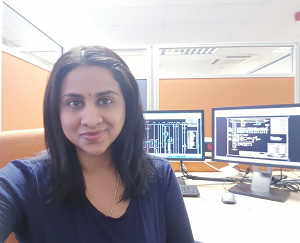
With this chemical qualification under her belt she secured practical in-service training at Proconics; a global electrical, control and mechanical engineering contractors hub. Here she worked in the software department. This exposure to a number of fields of engineering may well have assisted her decide on the direction her career should take.
In 2015 she acquired a B-Tech degree.
At this juncture she decided to shake it up and venture into the electrical engineering department within Proconics. But she lacked the requisite knowledge.
In her search to find where to gain the necessary electrical skills she came across the Engineering Institute of Technology (EIT) – the college offers an Advanced Diploma of Applied Electrical Engineering.
What appealed to her was EIT’s live, online platform of learning which allowed her to continue growing her portfolio of qualifications and sets of skills alongside her work at Proconics.
Mid way through 2017 she successfully graduated and is working confidently within the very technical world of electrical equipment. Seshni’s daily responsibilities include circuit design and among other things she calculates line voltages, line currents, primary currents and secondary currents for power transformers. She has also been given her own projects to manage. She says:
“When electrical drawings lack attention and detail, precision and neatness, I embrace the opportunity to ensure they are done swiftly and to perfection. I perform plant verifications to ensure the final drawings captured represent the equipment and its wiring in the plant. Great emphasis is placed on sizing circuit components.”
Continued professional (and personal) development
Seshni marvels at how the electrical engineering industry has continued to grow and mentions that Proconics has 20 years of service under its belt. She described their activities in the electrical field: they design substations, work with switchgears, organize UPS replacements and automate substations for some of the largest companies in the world including Siemens, Fluor and ABB. The industry is exciting to say the least. Naidoo says:
“If you have a passion for numbers and problem solving, you will find this industry exciting. You are continuously learning in this industry, too.”

For her personal development, the one book Seshni thinks everyone should read during their lives is Tony Robbins’ Money: Master the Game. Her interest here shows that Seshni is determined to make her salary work for her as she saves towards retirement.
But she isn’t finished yet. She intends to continue to pursue knowledge for both her professional and personal development. Seshni plans to get her Electrical Engineering degree through EIT, and by 2020 she intends to be studying toward a Project Management degree as well.
She is determined to achieve these goals, but is satisfied with how far she has come. Reflecting on how her Advanced Diploma of Applied Electrical Engineering contributed to her career she commented:
“I understand much more in the electrical industry than I did before. I am able to troubleshoot and find solutions easier. My projects are running much more swiftly now that I have completed the course.”
 The world’s most powerful man’s house was built by a woman. A new documentary is attempting to make sense of the unorthodox and unexpected trajectory of Donald Trump; a complicated story of a man who went from property mogul to President of the United States.
The world’s most powerful man’s house was built by a woman. A new documentary is attempting to make sense of the unorthodox and unexpected trajectory of Donald Trump; a complicated story of a man who went from property mogul to President of the United States.
After inheriting the family business, Donald Trump began his rise to prominence in New York City.
New York was in an unprecedented economic slump in the 1970s - but that didn’t deter Donald Trump from asking for tax abatements or cuts on new construction projects.
Due to the economic slump, the Commodore Hotel had fallen into disrepair and had become an eyesore to the city’s inhabitants.
Trump applied for and was given a 40-year tax abatement to renovate the Commodore Hotel in New York City - an historic contract, the first of its kind in commercial property.
Trump expressed his wish that the city would “stop playing around”. He wanted the decision makers in New York to trust him to reinvigorate a city in disrepair with the projects his business planned.
After being granted the tax abatement, Trump was given $70 million by a collection of banks to complete the project. Trump explained in his slightly muddled way:
“The new hotel, which is going to be spectacular, something that New York has never seen; with elevators on the outside, and atriums and the largest ballroom in the city. We feel all of these are going to combine with, really, potentially, the best area in New York city and probably New York city’s most important area, the Grand Central area. All of this is going to combine to make, probably, the most successful hotel in the country we’ve seen.”
Trump used glass and steel to make the building look like a premium skyscraper. In 1996, the Hyatt Corporation who owned shares in the building bought Trump’s shares for $142 million. All in all, the Trump dynasty was responsible for 15 buildings in Manhattan and had benefitted from tax breaks to the tune of US$885 million.
Women & Concrete
Then came the construction of Trump’s most audacious project yet - the Trump Tower. He ambitiously attempted to jostle the government for yet further tax reductions for this project. He eventually won them!

He began construction on the project, enlisting the help of a female engineer named Barbara Res. In a TV appearance, Res said:
“I am a graduate engineer and currently project manager of the newest addition to the New York city skyline known as the Trump Tower. I am proud of the fact that I am the first woman to have overall supervision of the construction of a major skyscraper in the New York metropolitan area.”
Res notes that the chances of a woman engineer getting the project manager position on a build like that was a rare occurrence in the industry. Females made up 1% of the engineering workforce in those years, Res recalls.
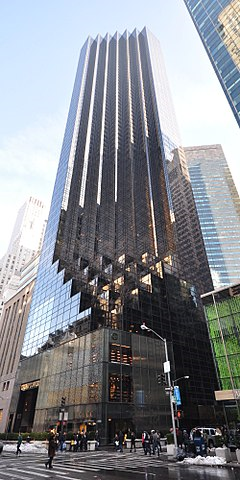
“It was a spectacular building. It was cutting edge, it was forward-thinking; the shape of it, the style of it, the idea of it, the location of it, the height of it. And the views were unparalleled. I mean, you had unobstructed views of whatever it was you were looking at. This was all very special stuff, and Donald had come up with this himself. He was a schemer and a dreamer and I just wanted to be part of It.:”
Trump moved away from the glass and steel approach of his previous projects, he built Trump Tower out of concrete. The construction manager for the Tower persuaded the structural engineer to switch to concrete; a cheaper and faster alternative to glass and steel.
Trump trumpeted that 5,000 construction workers were part of the build and added as a non sequitur that many people would be employed within Trump Tower as well!
Barbara Res admits that the general apartments in Trump Tower were cheaply made; she recalls Trump wanting to save as much money as possible. The allure of buying in Manhattan meant, however, that the lack of quality was overlooked.
Source: Wikipedia
Res, in the new documentary, Trump: An American Dream, said: “Yeah, it was Trump’s building - he conceived it...but I built it.”
Mr Trump is now the President of the United States and is promising tax cuts that will reportedly benefit the middle class. I dare say these hard working people deserve them – they would certainly not have had the opportunity to lobby governments for tax cuts while simultaneously feathering their nests.
There has, however, been a silver lining to it all: many engineers have benefitted from the array of construction projects that Trump has driven over the years. Barbara Res has opened up about her experiences, I am sure there will be others eager to reminisce about the man who is now the most powerful man in the world, for good or bad.
Works Cited
Bagli, Charles V. “A Trump Empire Built on Inside Connections and $885 Million in Tax Breaks.” The New York Times, The New York Times, 17 Sept. 2016, www.nytimes.com/2016/09/18/nyregion/donald-trump-tax-breaks-real-estate.html.
“Trump: An American Dream.” All 4, www.channel4.com/programmes/trump-an-american-dream.
Singapore’s Changi Airport recently unveiled the airport terminal of the future; their brand new Terminal 4 with a fully automated check-in system.
ICM Airport Technics, a global leader in airport technology solutions, are at the forefront of transforming airport terminals and their hybrid technology was installed in the new Changi terminal. Their Group Chief Executive Officer, Richard Dinkelmann, was the very first passenger at the Singapore Airport to utilize the check-in system.
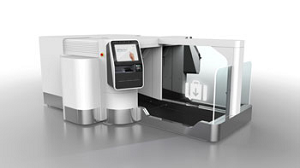
Image: New automated check-in system
Source: ICM Airport Technics
The flight was a Cathay Pacific flight to Hong Kong. Dinkelmann took to LinkedIn to praise the new technology:
“50 of ICM’s Series 7 hybrid ABD units are now live in this terminal. I was privileged to have been the first passenger to drop off my bag surrounded by Cathay Pacific and Changi staff. Total transaction time was less than 40 seconds - including face-to-face-passport biometric validation.”
Ang Siew Min, the Vice President of Airport Operations Management at CAG, when awarding the contracts for automated, self-service bag-drop solutions, said:
“With the wider adoption of self-service bag-drop machines at Changi Airport, passengers can look forward to a faster and more convenient check-in experience.”
Teething pains soon followed the launch of the new automated systems, as some passengers struggled with the new technology. The facial recognition process proved particularly onerous for some travelers.
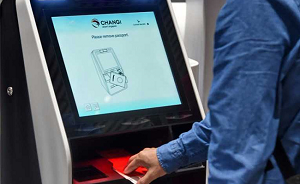
Source: AFP
The system will be checking in the passengers off 20 flights a day, 16 million passengers will utilize the terminal every year.
ICM Airport Technics mission was to build a user-friendly system that abides by all airport and airline security requirements, whilst being fast and efficient. The group recently installed check in systems in Munich airport as well.
Singapore’s Changi Airport is frequently called the best airport in the world. They are hoping that these automated processes and associated efficiencies will cement this reputation into place; in its entirety Terminal 4 cost US$723 million.
This is by no means the beginning or the end: the automated check-in system is a new addition to the plethora of automated technologies making their way into airports. In Terminal 4 there is also an automated tray return system at the Food Emporium: it retrieves customers’ trays post-meal. See the video below.
Works Cited
“ICM Airport Technics to Install Self-Service Auto Bag-Drops at Changi Airport.” International Airport Review, www.internationalairportreview.com/news/24757/icm-airport-technics-bag-drops-singapore-changi-airport/.
“Self Service Bag Drop.” Auto Bag Drop, autobagdrop.com.au/solutions/self-service-bag-drop/.
Working in a team is always challenging. With the increasing mobility of engineers and of people in general this is making team work even tougher. Engineering companies are inevitably employing professionals from an array of nations, creeds and walks of life. Most groups - let alone those with a broad diversity – will find they don’t always see eye to eye.
At world renowned engineering company Tesla, in the United States of America, 100 African-American employees (of 33,000 employees globally), have filed a class-action lawsuit against the company. They claim it has become a “hotbed for racist behavior” and has created a workplace where harassment is rife.

An excerpt of the complaint reads:
“Although Tesla stands out as a groundbreaking company at the forefront of the electric car revolution, the standard operating procedure at Tesla is pre-Civil Rights era race discrimination.”
It claims too that the age-old and contemptuous term for a black or dark-skinned person in the US has been bandied about within the company.
Elon Musk, CEO of Tesla, took to the in-company email system to address the claims being made and warned employees, in a down-to-earth manner, to proceed with caution in future:
“Part of not being a huge jerk is considering how someone might feel who is part of a historically less represented group. Sometimes these things happen unintentionally, in which case, you should apologize. In fairness, if someone is a jerk to you, but sincerely apologizes, it is important to be thick-skinned and accept that apology.”
The class action lawsuit follows a spate of job cuts at the company - Tesla recently let 400 employees go at once. The cuts come amidst a tight production schedule, as Tesla tries to meet their targets of their Model 3 electric vehicle.
The employee, who reportedly filed the class action suit, was terminated in October after reporting the racial issues to the Human Resources department and Musk himself.
Gender gap
Historically in engineering, there is a sizeable gap between the numbers of men versus women employees; this is aptly called ‘the gender gap’.
This year, James Damore, a software engineer working for Google, was fired for his seemingly politically incorrect views on why the gender gap in tech industries exists.
He wrote a ten-page document describing his view of sexism within Google. He explained that “not all of the male-female disparity in tech” was the result of sexism. He assigns the disparity to the fact that men and women are inherently different.
The leaking to the media of Damore’s document (designed as an internal memo) has resulted in a war of words between those of different political leanings. Having been subjected to internal diversity programs at Google Damore campaigned for the review of these methods; Google’s management did not take the criticism well, and let Damore go.
The Vice President of Diversity for Google, Danielle Brown said:
“Part of building an open, inclusive environment means fostering a culture in which those with alternative views, including different political views, feel safe sharing their opinions. But that discourse needs to work alongside the principles of equal employment found in our Code of Conduct, policies, and anti-discrimination laws.”

Upon hearing of his firing, the secret information publisher Wikileaks offered Damore a job.
Diversity in teams is not all bad – when managed well these work groups offer many benefits. The input from an array of cultural backgrounds and a mix of genders can inspire and drive innovation. Local market knowledge and insight can also give a company a competitive edge and therefore boost profitability. Analysis of teams with dissimilar nationalities and a healthy blend of men and women has found these groups to be more productive and to perform more efficiently. And interestingly, drawing employees from a culturally diverse talent pool increases a business’ ability to attract and retain the best people.
Works Cited
Hull, Dana. “Tesla Is a 'Hotbed for Racist Behavior,' Worker Claims in Suit.” Bloomberg.com, Bloomberg, 13 Nov. 2017, www.bloomberg.com/news/articles/2017-11-13/tesla-a-hotbed-for-racist-behavior-black-workers-claim-in-suit.
http://www.hult.edu/news/benefits-challenges-cultural-diversity-workplace/
Henry Petroski, an engineer who has specialized in failure analysis, and has written a dozen or so books on the subject, once said:
“Failure is central to engineering. Every single calculation that an engineer makes is a failure calculation. Successful engineering is all about understanding how things break or fail.”
Engineers are not only inundated with the potential mathematical design failure of their work, but also the organizational failures that could eliminate the chance of them ever getting their hard work out into the world.
There is no better example of how engineering and organizational miscalculations can lead to huge losses than Motorola's Iridium project. This project was headed up by Motorola’s Bary Bertiger and a handful of engineers; it has been singled out as the ‘biggest project failure in history’.

Bill McIntosh, a writer for the Independent, wrote in August of 1999:
“Behind the failure lies a salutary tale that shows how a potentially revolutionary product was hamstrung by unrealistic planning, insufficient management control, bungled marketing and, most surprisingly, technological pigheadedness.”
The story began in the mid-1980s when Bertiger’s wife complained about not being able to phone home during a trip to the Caribbean. So began a daring engineering initiative; a network of infrastructure to facilitate phone calls from one corner of the earth to the other. By 1997 the deployment of the satellites had begun.
Motorola Corporation planned to launch 77 satellites into orbit to achieve the gargantuan task. The company was pioneering - forging a path toward the interconnected, global village of communication we know today. The engineers raced to meet the technological demands of the satellites, their components, and the launch of them as well - all of this occurring after only 12 years of development.
Meanwhile, cellphone tower infrastructure was being perfected - it would lower the cost and achieve the same outcomes the engineers of Iridium were aiming to achieve with their satellite infrastructure. The GSM network was in the early stages of being born.
The price of the technology meant the Iridium handset cost consumers US$3,000 apiece and the call rates were extortionate at $30 a minute.
The company failed to find an effective marketing strategy to ensure the sale of these expensive products. To make matters worse the early versions of the cellphone experienced some technical issues. Soon afterwards, in 1999, Iridium filed for chapter 11 bankruptcy.
The damage had been done. US$5 billion of investment had gone down the drain.
Exponential Organizations
Sam Ismail, an author and researcher, wrote a book entitled: Exponential Organizations: Why new organizations are ten times better, faster, and cheaper than yours (and what to do about it). In the book he outlines his investigation into Motorola's organizational missteps; he refers to the woeful project as the Iridium Moment. Ismail asserts that many companies and their engineering projects have followed the same very flawed understanding of technology and the market. He names another such company, the Eastman Kodak Company.
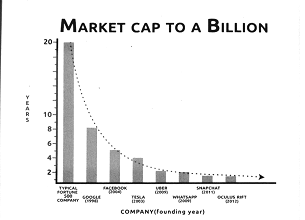
Image source: Exponential Organizations
Kodak declared bankruptcy in 2012 due to a technologically progressive market that saw consumers foregoing film and embracing digital. One of the reasons Kodak couldn’t recover, Ismail states in his book, was due to the rise of the app Instagram in 2012. The photography market had migrated to digital cameras, smartphones and apps.
Instagram, a company that had only been operational for only three years, completely disrupted Kodak, an industry heavyweight, and it had taken them years to grow. Ismail proved that a Fortune 500 company (of which Kodak was one) would have typically taken 20 years to be worth a billion, whereas smaller, more efficient companies, like Instagram, had done it in much less time. Ismail writes:
“We have entered the age of the billion-dollar startup and soon, the trillion-dollar corporation, where the best companies and institutions will be moving at seemingly light speed. If you haven’t transitioned into an Exponential Organization as well, it will not only seem as though your competition is racing away from you, but also, like Kodak, that you are sliding backwards at breakneck speed into oblivion.”
For engineers who are finding projects to be a part of, or beginning their own startup companies, it is important to bear in mind the missteps of the past. And there is proof everywhere that engineers succeed: they have been instrumental in the rise of Facebook, Uber, Instagram, and Snapchat; companies that have redefined how a company can grow exponentially through utilizing technologies in clever and different ways.
Works Cited
McIntosh, Bill. “Down to Earth Reasons for Iridium Failure.” The Independent, Independent Digital News and Media, 18 Aug. 1999, www.independent.co.uk/news/business/down-to-earth-reasons-for-iridium-failure-1113638.html.
“WHAT IS EXPONENTIAL ORGANIZATIONS?” Exponential Organizations, exponentialorgs.com/.
Zimbabwe could be at the dawn of a political revolution. It could also be business as usual. Amid a confusing week of political spring cleaning in the country, students working towards attaining qualifications in the tertiary sector have spoken out, painting a truly dire picture.
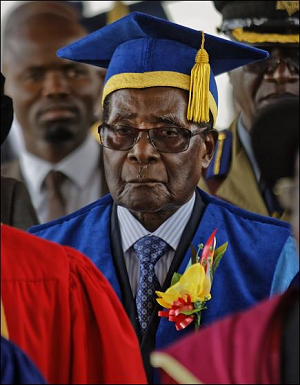
A few days ago BBC News described Zimbabwe as ‘cash-strapped and impoverished’. Despite this the powers that be were poised to initiate a raft of projects in honour of the recently deposed President, Robert Mugabe.
For example, it was revealed earlier this month that the country planned to upgrade its main airport at a cost of US$153 million and to rename it after the man who served as president for 37 years. The airport, currently named Harare International Airport, was to double its passenger capacity, to allow for 6.5 million passengers per year.
Another extravagant project was to include the launching a university worth US$1 billion; also to be named after Mugabe.
Are these plans likely to go ahead? Not much is certain after the military took control of the country on Wednesday 15th, when Mugabe was placed under house arrest.
The military acted after Mugabe sacked Emmerson Mnangagwa. It was Mnangagwa who they knew and trusted; as far as they were concerned he was to be Mugabe’s successor. With pressure from his second wife, however, Mugabe began preparing the way for her to succeed him as President; this was his undoing.
Reuters reported one of the delegates as saying, "He (Mugabe) has been expelled, Mnangagwa is our new leader."
The military is supposedly on a crusade to end corruption in the country. They are arresting government officials in an operation that will reportedly “weed out criminals around President Mugabe.” Incidentally, the officials who have been arrested were closely aligned to Mugabe’s wife, Grace.
The political situation has caused much uncertainty; in a country already reeling from mismanagement; 95% of those with qualifications in the country are unemployed.
And for those presently studying, a history of bad governance presents them with ongoing difficulties.
Ramifications on education and training
Students at the University of Zimbabwe are facing a fees crisis that is leading to many dropouts. Likewise, Zimbabwean distance learners, studying through global online institutions, have expressed their disdain at what has been transpiring in the country. The Reserve Bank of Zimbabwe has reduced (and in some cases banned) international transfers.
This has made it impossible for students to pay their monthly tuition fees. Some resourceful learners have made arrangements to continue paying.
An accounts department for an online institution mentioned that, “Some debtors are asking for financial aid from relatives out of Zimbabwe, and others travel to Musina (on the South African border) every month to pay tuition fees. They secure the forex from the black market -- really.”
Others have had to drop out.

(Interestingly the response to the flailing economy and the shortage of cash in the country has resulted in people investing in cryptocurrencies. Zimbabwe’s Golix bitcoin exchange rose by 10% on the day of the faux-coup.)
Zimbabwe has the highest adult literacy rate in Africa - approximately 92% of its population can read. Despite this extraordinary statistic, poor governance has resulted in soaring unemployment and devastating poverty.
It seems that the uncertainty in the country may persist for some time, but many do believe that there is a glimmer of light at the end of the tunnel. If the new government focusses on rebuilding the country they will not be disappointed, the people of Zimbabwe will do what they can to support them.
Works Cited
Brand, Robert, et al. “Zimbabwe Doesn't Have Its Own Currency and Bitcoin Is Surging.” Bloomberg.com, Bloomberg, 15 Nov. 2017, www.bloomberg.com/news/articles/2017-11-15/bitcoin-surges-in-zimbabwe-after-military-moves-to-seize-power.
“Is Zimbabwe's Adult Literacy Rate the Highest in Africa?” Africa Check, africacheck.org/reports/is-zimbabwes-adult-literacy-rate-the-highest-in-africa/.
When I learnt that Yoni Wa Mbayo Zengwe wakes up to study and sharpen his professional skills for two hours every morning before work, the rest was not surprising. He is a proficient programmer, follows best practice in industrial communications design, is experienced in installation and commissioning, and is a master of process control and advanced process control - the list goes on.
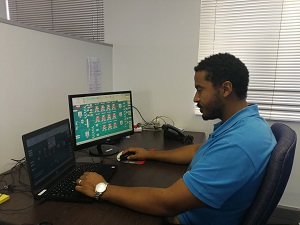
How has he acquired all this?
He began by completing a National Diploma in Electrical Engineering at a tertiary institution in South Africa. This qualification, together with a sound work ethic, prepared him for the work force and so began his journey of endeavor.
In March 2010, he was employed as Junior PLC and SCADA Software Engineer at a system integrating company. In that first year of his career he walked away with the Best Junior Software Engineer award.
Zengwe was keen to broaden his skill base so found himself work in the mining industry. During the following three years he noted with interest that the industry was becoming increasingly automated.
He understood that to remain within engineering and to avoid working in areas being hollowed out by automation; he had to continually upskill and look for opportunities.
Yoni explains that he wasn’t able to go to a ‘conventional university’. He was working on a rotation of 8 weeks onsite and 2 weeks off site, and needed a more functional way of continuing his professional development and furthering his education, while still working. He eventually found the perfect fit for him: the Engineering Institute of Technology (EIT). He recalls enrolling on the Advanced Diploma of Industrial Automation:
“While doing the course I started solving some of the issues we had on site that could not be solved before. I remember while doing the ‘Best Practice in Industrial Communications’ module, I managed to solve intermittent loss of Profibus communications after learning a few tricks from the subject. Studying for the advanced diploma felt like adding at least 5 years of experience to my career.”
Zengwe points out the merits of working alongside his study; he was able to meaningfully and usefully apply and practise his newly learnt skills at work, as he progressed through his course.
It was the flexibility of the live online model of learning which encouraged Yoni to embark on one of EIT’s 3 month courses (designed for professional development). He earned his Certificate of Competency in Allen Bradley ControlLogix 5000 PLC.
But it was the boost his career received (as a result of the advanced diploma), that inspired Yoni to enrol on EIT’s online Bachelor of Science in Industrial Automation. He said:
“I have since been working for another system integrating company. My current work conditions could have enabled me to study part time at a conventional university here in South Africa, but after comparing my knowledge base with other professionals in the industry, I definitely feel like I have got an edge, thanks to what I have been learning while studying at EIT.”
Yoni is motivated by the allure of growing his knowledge base so plans to pursue EIT’s Master of Engineering in Industrial Automation when he graduates from his Bachelor degree.
We at the Engineering Institute of Technology thank him for his loyalty to the college; we congratulate him for his success thus far and wish him everything of the best in both his work and study.
Leading Australian artificial intelligence scientist Professor Toby Walsh is warning that we are "sleepwalking" into an AI future in which billions of machines and computers will be able to think.
Professor Walsh, from the University of New South Wales, is calling for a national discussion about whether society needs to adopt clear boundaries and guidelines around how AI is developed and how it's used in our lives.
In his book It's Alive: Artificial Intelligence From The Logic Piano to Killer Robots, he has highlighted key questions in a series of predictions that describe how our future could be far better or far worse because of AI.
Here's how he thinks society might change by 2050 thanks to artificial intelligence.
1. You are banned from driving
Humans drive drunk, tired and distracted and cause 95 per cent of accidents.
The roads will be much safer without human drivers and most likely far less congested, as networked vehicles service passengers 24/7.
Street parking and most car parks will disappear, transport will be cheaper and groups such the elderly and disabled will have greater personal mobility.
Most people won't bother buying cars and will lose driving skills. And autonomous vehicles will arrive quickly — within 15-20 years.
"By 2050, the year 2000 will look as quaintly old-fashioned as the horse drawn era of 1900 did to people in 1950," Professor Walsh said.
2. You see the doctor daily
Your personal 24/7 AI doctor will know your gene sequence and vulnerabilities to particular diseases.
It will continually monitor your blood pressure, sugar levels, sleep and exercise. It will process data from your toilet, which will automatically analyse your urine and stools.
Your future version of a smartphone or fitness watch will regularly take selfies to identify melanomas and eye disease. It will record your voice for signs of a cold, dementia or a stroke. It will call for help if you faint. It will also be a trillion-dollar global business.
"Our personal AI physician will have our life history, it will know far more about medicine than any single doctor, and it will stay on top of all the emerging medical literature," Professor Walsh said.
3. Marilyn Monroe is back in the movies
Avatars will be programmed to act and talk like anyone we choose in interactive movies, including ourselves or celebrities from recent history.

PHOTO: The view from inside a Volvo driverless car on its trial on Adelaide's Southern Expressway. (Australian Driverless Vehicle Initiative)
Where the story goes depends on what you do or say.
Hollywood and the computer games industry will merge and immerse us in hyper-real worlds.
But there will be increasing concern about the seductive nature of these unreal, alternate worlds.
There may be an underclass of addicts who spend every waking moment in them. And some who behave in distasteful or illegal ways.
"This problem will likely trouble our society greatly," Professor Walsh said.
"There will be calls that behaviours which are illegal in the real world should be made illegal or impossible in the virtual."
4. A computer hires and fires you
That's just the beginning. AI systems will also increasingly take over managing how you work: scheduling your activities, approving holidays, monitoring and rewarding your performance.
But should we hand over decisions like hiring and especially firing to a computer?
"We will have to learn when to say to computers: 'Sorry, I can't let you do that.' It's not enough for a machine to do a task better than a human. There are some decisions we simply should not allow machines to make."
5. You talk to rooms
You will walk into a room and say "lights on" and "who won the football?" and one of the many AI devices in your house will recognise your voice and understand you well enough to know which football code you follow.
A few people will resist and determinedly follow a disconnected 20th Century life. But most of us will take advantage of having just about everything in our lives connected: fridges, toasters, baths, door locks, windows, bicycles and pot plants.
AI will operate through the so-called Internet of Things using conversation instead of typing.
"Our privacy, diversity and democracy will be challenged," Professor Walsh said.
"[Government] intelligence [agencies] can't wait for every room to be listening to us. Marketers, too, would love all this data about our everyday lives.
"So, the next time you get asked to check your privacy settings, think long and hard about what you may be giving up."
6. A robot robs a bank
Cyber-crime to date has been relatively low-tech with phishing and malware attacks. But AI will surpass human hackers — and the only defence will be another AI program.
Warfare is also moving into cyberspace. But these technologies will also quickly find their way into the civilian sphere.
One of the challenges will be that many advances in AI used to defend systems will be quickly turned around to attack systems.
"The supposed hacking by Russians in order to influence the 2016 US presidential election demonstrates the impact that such cyber attacks can have," Professor Walsh said.
"Banks [and other companies and governments] will have no choice but to invest more and more in sophisticated AI systems to defend themselves from attack."
7. World soccer champions lose to a robot team
Robots will have superior ball skills, including unfailing accuracy in passes and penalties.
They will know precisely where all players are at all times and will know how to interpret that information because their AI system learned strategic play from watching every World Cup match ever recorded.
The human team will be soundly defeated. Even fans of the robots will call for the humans to be given a break. That's why most sporting teams will stay human.
But AI will change football and most other games with managers and players using AI to train and play better.
"Data scientists will be some of the best paid members of football [and other sporting] clubs," Professor Walsh said.
"Scouts will hang out at [top universities] to recruit young computer scientists."
8. Ghost ships, planes and trains cross the globe

PHOTO: Uber's first self-driving truck, Otto. (Supplied)
The oceans, skies and railroads of the planet will be filled with autonomous ships, planes and trains transporting cargo without any people on board, as driverless car technology spreads to other industries.
It will improve safety and efficiency. And children will no longer grow up wanting to be train drivers.
"Planes carrying people will probably continue to be piloted by humans," Professor Walsh said.
"But after several decades of safe flights by cargo planes, the debate will begin whether humans should still be airline pilots."
9. TV news is made without humans
Nearly every part of this prediction is already here — it's just that no-one has yet pulled all the pieces together.
Computers now write simple sport and financial stories but as technology improves, AI will write more complex stories.
Avatars and chatbots will play the role of presenters filmed by robotic cameras. And the news you watch will be narrowcast, or tailored to your personal preferences.
"There will be ongoing debate about the biases of algorithms, especially when humans take no part in deciding what news we see," Professor Walsh said.
"Our viewpoints are shaped by the lens through which we look at the world. Will algorithms challenge us enough? Will they understand lies and deception? Will they care about what we care about?"
10. Humans live on after death
It will be common to leave behind an AI chatbot that will talk like you, know the story of your life and comfort your family when you die.
Some people might give their chatbot the task of reading their will; settling old scores; or relieving grief through humour.
Digital doubles will also appear in place of the living. Celebrities will use bots to create social media; many of us will similarly use them to manage our diaries.
This digital outsourcing will fuel a lively debate.
Professor Walsh asked: "What redress do you have against an AI bot that pretends to be you? Do you have a right know if you're interacting with a computer rather than a real person? Should AI bots be prohibited from political discourse? Who can switch off your bot after you die? Do bots have freedom of speech? It will be an interesting future."
Whilst optimized curriculum vitae look good, professional licensing also speaks volumes to employers. But is the professional engineering status necessary? Can you call yourself an engineer without the formal designation of Professional Engineer?
In the fourth industrial revolution, with automation replacing many repetitive roles, a more fluid and dynamic set of engineering skills may be necessary. The future is very likely to require engineers to amass as many skills as possible.

To be employable practical skill and theoretical knowledge are a powerful combination. A qualification is highly valued and certainly makes finding a job that much easier. But a qualified individual with relevant experience is likely to be best placed to win a sought-after job.
There is also a notion of professionalism in the engineering industry. The question is: what truly makes an engineer an engineer? The job title is thrown around casually in some countries. In others the engineer is only recognized by prescribed professional status.
Should you get your PE status?
A common question among wannabe engineers is whether or not getting the formal credentials is necessary. In some states in the US, for example, it is illegal to call yourself an engineer if you do not have the Professional Engineering (PE) status.
A forum chat amongst the engineers on social media site Reddit discussed PE status. A question about getting PE status in the aerospace industry was posed. A user named Red_Eye responded to the question, saying:
“PE in aerospace industry here. Will it benefit you on paper in any way? Not directly. Companies like Lockheed are structured in such a way that your pay and promotions are based on years of experience, and nothing more. I will say, however, that it may increase your prestige and level of responsibility, thus increasing your job satisfaction. Eventually, you can use this to leverage a pay increase.”
Experience, on the other hand, is not being questioned; it is highly valued by industry. Unfortunately, students straight from university are not adequately equipped for the workplace so are often overlooked by experienced candidates and can struggle to secure work.
How the Engineering Institute of Technology (EIT) does it
EIT provides education and training options and pathways that can be acquired alongside full time work. Their live, online platform of learning enables this. EIT ensures all programs are driven by the skills required by industry which in turn are presented to students by industry experts.
Through a flexible, yet intensive system of education EIT qualifies individuals as technicians, technologists and engineers, whereafter graduates can apply for professional status in their own countries.

The Dean of Engineering at the Engineering Institute of Technology, Steve Mackay, highlights that the workplace for an engineer is vastly different to thirty years ago. And he feels that this is the same with tertiary education. Instead of attending a class on campus, engineers can now become qualified whilst earning money and gaining experience on the job.
An added bonus is that this often makes the process of study much more meaningful.
Each person’s career path is unique, but some things have become clear: we all need to remain nimble and do our best to remain at the forefront of changes in technology. We also need to avoid lengthy stints in positions which may become hollowed out by automation.
Works Cited
“Does Having a Professional Engineering (PE) License Benefit You in Anyway If Your Working for the Aerospace Industry like Lockheed Martin? • r/AskEngineers.” Reddit, www.reddit.com/r/AskEngineers/comments/64heyg/does_having_a_professional_engineering_pe_license/.
The New Generation for Engineering Education!
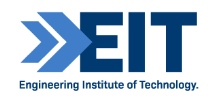
We have two FREE sessions coming up in November and we would love for you to join us if you are contemplating studying either online or on-campus to help advance your engineering career.
The first session is our Sundowner Info Session held at our new East Perth Campus on November 23. The second session is being held in Melbourne on November 30; join two passionate engineers with over 40 years of industry experience talk about the Engineering Jobs of the Future!
Yahama is taking self-driving cars a step further: self-driving motorbikes. Meet MOTOBOT, a motorbike driving robot that has been engineered to surpass humans; to beat them at their own sport.
After months of trial and error, the engineers at Yamaha were ready to pit their self-driving robot against a human - a professional biker named Valentino Rossi. But the road to getting a robot driving a motorbike had to start with one crucial function: balancing.
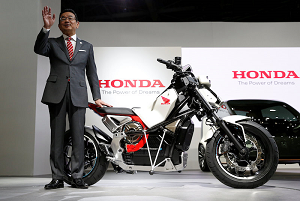
Image: Honda’s Self-balancing Bike
Source: The Malay Online
Honda has also been tasking their engineers with balancing motorbikes - and they seem to have perfected their ability to self-balance. They have called it the ‘Riding Assist-e’ - an all-electric motorbike that will never fall over.
The bike was reportedly engineered with inspiration from the ASIMO robot - made popular by Honda in 2000. The company is naturally keeping the particulars of how they engineered the vehicle under wraps. However, we know it has something to do with the bike’s gyroscope. Lead engineer Hiroyuki Nakata said:
“For years international bike manufacturers have experimented with various forms of gyroscopes to stop motorcycles falling over. But if you wanted to keep something as heavy as a motorcycle standing, you need a large and heavy gyroscopic device and you need to keep turning it.”
In Yamaha’s case, they fitted a robotic rider to their biker to control the motorcycle. To balance the motorbike, the engineers have positioned a humanoid robot on top of it, keeping the bike stable. Unlike Honda’s concept build, Yamaha’s bike is completely unmodified. On race day, the robot was unfortunately not as fast as Rossi. Rossi set a time of 85.740 seconds, whereas MOTOBOT set a time of 117.504 seconds.
Engineers now need to figure out how to implement an artificial intelligence that can mirror human decision-making in order to beat the Rossi’s lap record. They also need to enable the fixed humanoid robot to move atop the bike, to increase the accuracy of turns and generally display the agility of a human.
All in all, the experimentation of self-balancing and self-riding motorcycles will result in improving motorcycle safety in future. The Chief Executive of Yamaha says the project is a “moon shot”; if they are to get it right it could change the game.
Your next pizza could just be delivered by an autonomous motorcycle!
Works Cited
“MOTOBOT Episode 3: Racing the Clock 挑戦.” YouTube, 24 Oct. 2017, youtu.be/mafJmMGGOXk.
Philip E. Ross
Posted
27 Oct 2017 | 16:00 GMT. “Watch Yamaha's Humanoid Robot Ride a Motorcycle Around a Racetrack.” IEEE Spectrum: Technology, Engineering, and Science News, 27 Oct. 2017, spectrum.ieee.org/cars-that-think/transportation/self-driving/watch-yamahas-humanoid-robot-ride-a-motorcycle-around-a-racetrack.
Fifteen - the number of vehicle-ramming attacks from 2016 to 2017. Most recently, a man driving a vehicle on the streets of New York City in Lower Manhattan intentionally steered a pickup truck down a bike path, killing eight.
It was an act of terror, said Mayor Bill de Blasio. It was the deadliest attack in New York City since 9/11, taking place near One World Trade Center.
These vehicle-ramming attacks have presented security services around the world with new, complex, setbacks in the fight against terrorism that occurs in cities.

Stockholm, London, Germany
In Stockholm, Sweden, a vehicle-ramming attack in April 2017 had the city turning to a sturdy material that could stop vehicles in their tracks: concrete. After the attack, authorities asserted that putting obstacles in the way of vehicles in densely populated areas would help curb the likelihood of a vehicle driving down a sidewalk.
The street where the attack occurred, Drottninggatan (Queen’s street) already has 38 lions. But the country wants to purportedly order in larger, heavier concrete lions. The town would also start using concrete blocks and wooden furniture to create further obstacles.
Similarly, concrete barriers were placed at the site of the Berlin Christmas Attack of 2016.
In London, a shocking attack on London Bridge has led to sizeable barriers placed in the middle of sidewalks to prevent vehicles mounting and driving down the length of the sidewalk.
Do the security measures solve the security issues? Not by any means. That’s why Sweden is going a step further.
Geo-fencing
After the NYC attack this week, Stockholm’s transport commissioner, Daniel Halldén, stated that the concrete lions were unlikely to stop an attack of the same magnitude as NYC. To safeguard Stockholm a new technology is being considered: geo-fencing.
Here is a brief explanation of what a geo-fence is:
Geofences can be setup to send out notifications once an unwelcome entity breaches a designated boundary. These notifications alert security services as soon as the virtual border is traversed.
The geofence requires an electronic device to make an identification. Historically these devices have been smartphones with GPS capabilities.
Whilst not every car and truck will have a smartphone built in, they could all contain a RFID tag. RFID tag technology is infiltrating a plethora of new industries. A recent upsurge of RFID tags has been observed in the retail, agricultural, and now transportation industries. They are considered, at present, the best way to track items in a multifaceted system.
The geofencing system has another possible benefit; it has the ability to notify and alert users, via their smartphones, of the comings and goings within a geo-fenced area. The intention behind this is to alert those within the system that there is a potential threat and consequently reduce casualties during a terrorist attack.
Daniel Halldén believes, however, that the technology needs to be more sophisticated if it is to defend civilians against terrorism. He may be alluding to an interconnected system of vehicles linked to a central hub. He envisions that all vehicles entering the geo-fenced area will have their speed controlled. He said:
“What we need is a system where larger vehicles can’t drive through the tolls without a device that controls the speed. If a vehicle drives too fast in a spot where it’s not allowed, it would automatically stop.”
Other futurists believe that we could begin to see geospatial intelligence employed in an effort to combat terrorism; real-time satellite and unidentified aerial vehicles monitoring from above the earth. This will indeed prove a controversial form of engineered surveillance, but if it has the potential to save lives in the future it is likely to be embraced.
Works Cited
Hermesauto. “Lions and Sandbags: Europe Protects against Car Attacks.” The Straits Times, 18 Aug. 2017, www.straitstimes.com/world/europe/lions-and-sandbags-europe-protects-against-car-attacks.
Local, TT/The. “Sweden Mulls Introducing Digital 'Anti-Terror' Fences.” The Local, The Local, 2 Nov. 2017, www.thelocal.se/20171102/sweden-plans-digital-fences-to-protect-against-terror-attacks.
The demand for technicians, technologists and engineers in industrial automation, instrumentation and process control is growing rapidly. Why? Because when automation is introduced into industry, production becomes much more efficient and cost effective.
Consider the needs of employees:
- They need training
- They get sick
- They receive wages
- They go home at the end of each day
- They are more productive one day, but less so the following day
Compare this with the needs of control systems - such as computers or robots - and consider the capacity machines have for hard work…….
But Industrial Automation experts ARE needed? The automated systems need to be designed, manufactured, commissioned, calibrated and maintained.
If your students are already in engineering or dreaming of a career in it – they must consider a degree in Industrial Automation!
- Bachelor of Science (Industrial Automation)
- Master of Industrial Automation
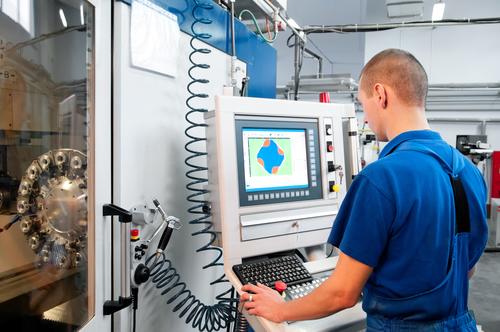
Kevin Hagen works in the plant and process industry; he is the principal engineer at GHD Consulting Engineers. He works in hazardous areas; grappling especially with flammable gases and dusts.
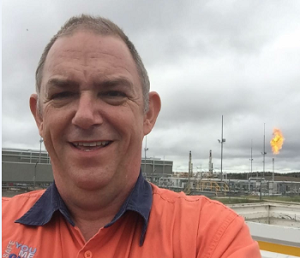 He studied for his Advanced Diploma in Applied Electrical Engineering through EIT, in 2011. After his graduation he joined the Institute of Engineers Australia (IEAust) and is now pursuing his chartered status as an engineering associate.
He studied for his Advanced Diploma in Applied Electrical Engineering through EIT, in 2011. After his graduation he joined the Institute of Engineers Australia (IEAust) and is now pursuing his chartered status as an engineering associate.
Kevin says that his EIT qualification formalized many years of practical experience. Furthermore, despite his significant experience in the field, he found that the course was instrumental in expanding his practical knowledge; something other tertiary education institutions hadn’t been able to provide him in the past. He said:
“I have found the practical, technical, knowledge acquired during the course to be of significant value in my work. I have previously undertaken non-vocational tertiary study and found it to be of little practical value.”
March 2018 will signal 40 years of service in the engineering industry for Hagen. However, he isn’t finished just yet. He is determined to pass on whatever knowledge he has amassed to the next generation of engineering professionals - he will be making this a priority. It is a commendable ambition and we wish Kevin well; young engineers learn more from passionate, experienced mentors than from any amount of book learning.
Higher education institutions were delivered a few body blows last week. Proponents of TAFE (technical and further education) - the leading provider for vocational education and training courses in Australia - delivered the verbal battering.
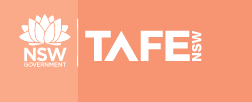
According to ABC News, a number of courses have been cut and campuses closed down, with enrollment figures down by 25 percent as well.
TAFE New South Wales’ Managing Director, Jon Black, asserts that according to Australia’s Productivity Commission’s report, “university students are struggling to find employment relevant to their studies”. He also accused universities of producing more debt for students than TAFE does with their expensive programs.
The New South Wales (NSW) Education Minister, Rob Stokes, responded vigorously to Black’s accusations, saying:
“It is a mistake to talk down the value of universities in a populist attempt to pit the higher education and vocational education sectors against each other. We should be careful not to reduce the value of a university degree to an assessment on whether it prepares a student for one specific job which may not exist in the future.”
What seems clear is that support for TAFE has been waning in the last few years. ABC News reports that in the past 81% of publicly funded students were being taught through a TAFE system, a figure which dropped to 50% by 2015.

Image credit: NSW TAFE
The NSW Labor party has vowed that, if put in the seat of power in the future, a guaranteed 70% of government VET funding will flow back to TAFE. Some online commentators feel that the strain that exists between the two tertiary sectors may persist, but believe that TAFE must be saved for students who are not compatible with university-styled education and content.
No matter the sector, however, one thing is certain: if we fail to nurture a system which prepares students for life and a workplace which is constantly changing, we are failing them and the industries they work in.
Company dissatisfaction is already reflected in the changing of some hiring practices. There are those companies which have begun selecting candidates without regard for academic background. Ernst & Young, for example, have been accepting applicants without formal university education. This shift has everything to do with the realization that graduates are very often ill-prepared for the workplace.
Another issue arising from this emphasis on degrees is outlined by Joshua Krook, a Doctoral Candidate in Law at the University of Adelaide. In a piece for The Conversation, he alludes to the fact that Australia is a country of university degree acquirers. This, he says, forces Australia into a situation where there is rampant underemployment of non-vocational tertiary skilled graduates. He writes:
“Where a bachelor’s degree was sufficient to get a job in research, now a master’s degree is required. Where a master’s degree was sufficient to get a job in university tutoring, now a PhD is required.”
The answer must be a vibrant sector offering industry-driven courses, offered by both TAFE and private vocational institutions. These will ensure students can acquire practical proficiency in sets of skills required by the workforce today and into the future.
Some Twitter users clarify the benefits delivered by the vocational sector:
Twitter user @azza1993 writes:
“I could’ve gone straight to uni for an IT degree. Decided to go to TAFE first and it was second to none for practical experience.”
Another Twitter user named @sewviolets writes:
“Uni has been pushed at the expense of what used to be an excellent TAFE system.”
The vocational institution future
The push (or pull) of students to graduate with degrees is becoming more prevalent around the world. Already, however, there is some awareness that significant skill gaps are emerging and highly qualified graduates are either working in fields unrelated to their studies or finding themselves back at college.
German school leavers seem to have resisted this trend and the UK is addressing it quite vigorously. More recently there has also been a resurgence of technical and vocational institutions in the United States of America; with Trump calling them earlier this year, “the way of the future”. He intends to empower this education sector so that its graduates help reinvigorate the industries that require their more practical skill sets.
Works Cited
Brown, Michelle. “TAFE Hits out at Universities for Higher Debt, Weaker Job Prospects.” ABC News, 25 Oct. 2017, www.abc.net.au/news/2017-10-26/tafe-hits-out-at-uni-over-cost-and-job-prospects/9087252.
Joshua Krook
Doctoral Candidate in Law, University of Adelaide. “Degrees of Separation: Companies Shed Degree Requirements to Promote Merit over Qualifications.” The Conversation, 24 Oct. 2017, theconversation.com/degrees-of-separation-companies-shed-degree-requirements-to-promote-merit-over-qualifications-76150.
The methods used by the architects and engineers in the ancient world often remain mysterious and enigmatic. How the Great Pyramids of Giza were built, for example, still manage to stump engineers and other experts from around the world.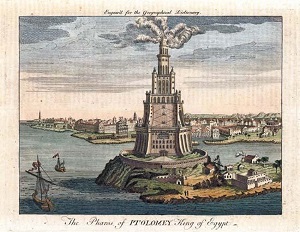
Neither the tools nor the techniques used to construct these complex and giant edifices can be fully explained. It is this fact that makes them one of the seven wonders of the ancient world.
The Lighthouse at Alexandria or Pharos of Alexandria is also considered one of those seven wonders. It is an ancient marvel not ever replicated in the modern world; an example of engineering design that has been lost to history.
The Lighthouse, erected in the ancient Greek town of Alexandria, no longer exists. A spate of earthquakes between CE 956 and 1323 caused catastrophic failure. A remnant of a lighthouse, built to similar specifications by the Roman Empire, does however exist at Dover Castle in the United Kingdom.
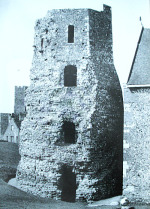
Image: Ruin of Roman Lighthouse at Dover Castle
Source: Garry Hogg
Pharos of Alexandria was engineered by Sostratus of Cnidus, the Greek architect and engineer in 280 BCE. It is said to have been the world’s first lighthouse.
It was also considered one of the highest buildings in the world, it stretched to 400 feet. But some believe it was originally 100 feet tall; the confusion allegedly stemming from the number of times the lighthouse was repaired after earthquake damage.
It had a square base made out of masonry blocks, lined with molten lead - this ensured a sturdy build that could withstand waves crashing into it.
Arab traveler Abou-Haggag Al-Andaloussi offers the most descriptive account of what the Pharos of Alexandria looked like. He wrote:
“The Pharos rises at the end of the island. The building square, about 8.5 meters (28ft) each side. The sea surrounds the Pharos except on the east and south sides. This platform measures, along its sides, from the tip, down to the foot of the Pharos walls, 6.5 metres (21ft) in height. However, on the sea side, it is larger because of the construction and is steeply inclined like the side of a mountain. As the height of the platform increases towards the walls of the Pharos its width narrows until it arrives at the measurements above.”
Possible war machine
It is believed that a fire lit it at night, but mirrors reflecting the sunlight were used during the day. It is said that once the Romans had control over Alexandria, they utilized a rotating, reflective mirror system similar to that which is used today inside a modern lighthouse.
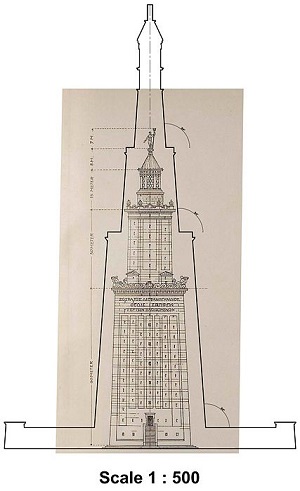
Rumor amongst historians and legend suggest that the mirrors could have been used for warfare too with the Romans manipulating the mirrors to defend the city from enemies. This involved focusing the rays of the sun onto the mirrors then reflecting this magnified intensity onto the oncoming ships, leading to their fiery end. Scholars remain skeptical.
Whether a war machine or not, it is still considered one of the greatest feats of engineering of its day. And for this glimpse into the ancient world of engineering our gratitude must go to the careful writings of a handful of Arab writers and 1st century Roman historian Josephus.
Works Cited
“Eye Witness Accounts of the Lighthouse of Alexandria, One of the Wonders of the Ancient World | 1001 Inventions.” 1001Inventions, www.1001inventions.com/lighthouseofalexandria.
sunbright57. “The Roman Lighthouse, Dover, Kent.” The Journal Of Antiquities, 2017, thejournalofantiquities.com/2013/05/12/the-roman-lighthouse-dover-kent/.
The fight against cancer continues. Biomedical engineers have announced a new skin cancer diagnosis tool that will identify cancers in up to 30 seconds.
Presently, a dermatologist needs to remove potentially malignant skin from a patient and send it away for testing to assess whether or not the skin is cancerous. This can cause unnecessary scarring for some and dangerous delays for others. The key to stopping cancer in its tracks is quick diagnosis.

Non-melanoma skin cancer is the most common form of cancer we know today. The EU-funded group, the Automatic Detection of Vascular Networks for Cancer Evaluations (ADVANCE) has now made the process of identifying skin irregularities which pose potential health risks more efficient.
Now, with infrared laser technology, the new ‘Vivosight’ enables a specialist to see further into the skin than ever before. The technology employs advanced optical coherence tomography technology, similar to that found in retina scanning machinery.
The technology allows the experts to peer 1mm underneath the skin and create a 3D color image of microscopic blood vessels. It is the first time dermatologists have been able to see such a detailed picture of what blood and tissue are doing, in real time, with a handheld scanner.
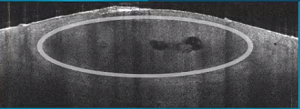
Image: The Vivosight spotting skin cancer
Source: Vivosight
The technology is already being used in Europe and the United States of America.
Jon Holmes of Michelson Diagnostics, a partner of ADVANCE, speaking to Sci-News, lamented over the slow process of diagnosis that still exists today. He said:
“There has to be a better way: our scanner may radically improve the abilities of dermatologists to decide whether a melanoma is in the less malignant, non-spreading, early stage, or if it has already developed and requires immediate aggressive therapy. Further clinical trials will be needed to conclusively prove the technology.”
Because the scanner enables the viewing of blood vessel networks it may also assist with other diagnoses as well. Holmes says treatment of leg and foot ulcers could be a useful benefit that the technology’s capabilities provide; it would certainly determine how quickly or slowly a wound is healing.
With these kinds of advancements in biomedical engineering, increased investment and growth in the industry is a certainty. An increasing population demanding good health will drive efficiency of diagnosis and other beneficial medical tools which must be designed and manufactured by the biomedical engineering industry.
Works Cited
“Dynamic OCT: Introducing the VivoSight DX.” YouTube, YouTube, 15 May 2017, www.youtube.com/watch?v=s4sWYF_4txE.
Knight, Helen. “OCT Laser Scanner Detects Cancer in under 30 Seconds.” The Engineer, 31 Oct. 2017, www.theengineer.co.uk/laser-scanner-cancer-oct/.
The Great Pyramids of Giza are a complex of ancient monuments dating back to 2,000 BCE. They have taken their rightful place as one of the seven wonders of the ancient world; monuments that reflect astonishing ancient engineering skill and precise architecture. The pyramids are also the last of the seven wonders of the ancient world to remain standing.
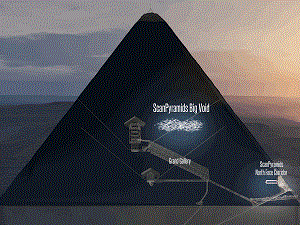
They have been extensively researched, prodded and explored; despite this the manner in which they were constructed is largely unknown. The mystery remains, but a new discovery may shed some light on part of the process.
Engineering and archaeological professionals believe they have found a previously unknown void in the Great Pyramid - also known as Khufu’s Pyramid.
The ScanPyramids Project started in 2015. The Faculty of Engineering at Cairo University and the Heritage Innovation Preservation got the ball rolling, recruiting many scientific partners including Japan’s Nagoya University, and others, to work alongside the project. Their mission is to expand the search within the pyramids non-invasively.
Using the latest in site surveying technologies, the team went to work. Through the utilization of infrared tomography and 3D simulations, they began their work. Two years later, with the use of radiographic moun tomography technologies, the engineers and archaeologists could confirm that there are voids, previously undiscovered, within the pyramids.
In their report in the Nature Journal the researchers explained how they found the void. They wrote:
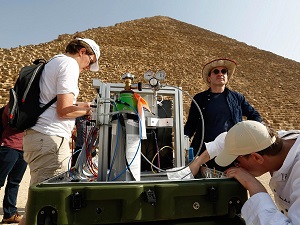
“To better understand its internal structure, we imaged the pyramid using muons, which are by-products of cosmic rays that are only partially absorbed by stone. The resulting cosmic-ray muon radiography allows us to visualize the known and potentially unknown voids in the pyramid in non-invasive ways.”
In simple terms, the process basically allows researchers to ‘X-ray’ dense materials.
Through many independent investigations, many of the scientific groups and engineering groups involved all agreed that their muon-heavy data showed that there was definitely a void above the Grand Gallery - a section of the Great Pyramid discovered in the 19th Century.
The technology has been used to plot out segments of the pyramids before, but the technology has since been improved. (This form of radiography has also been used to look inside the Fukushima nuclear reactor without endangering life.)
Minister of Antiquities for the Egyptian government, Zahi Hawass, is skeptical about the new find. He says the belief that there are large ‘voids’ within the structure is tenuous. He thinks that the pyramid is very likely to be full of tiny voids that maintain the structural integrity of the pyramid.
To substantiate the existence of the void is fraught with difficulty; archaeological works on an undiscovered void with no apparent entryway may cause damage to the pyramid.
Nonetheless, the project reflects the power of collective expertise; where researchers from different industries and countries come together and use the tools at their disposal to uncover history.
To see the full report on finding the voids within the pyramids, take a look at this video:
Works Cited
Fleur, Nicholas St. “Inside Giza’s Great Pyramid, Scientists Discover a Void.” The New York Times, The New York Times, 2 Nov. 2017, www.nytimes.com/2017/11/02/science/pyramids-giza-void.html.
Nature(2017).doi:10.1038/nature24647.12 October 2017.24 October 2017. Published online. 02 November 2017
President Xi Jinping of China has earned official recognition as the Communist Party’s leader. An honor bestowed last to Mao Zedong and his successor Hua Guofeng. This means that the leader has garnered the utmost respect of all members within the party.
Xi Jinping can therefore put his recently unveiled Belt and Road Initiative (BRI) into action. The initiative is a $US1 trillion plan to revolutionize manufacturing and construction in the country. The government hopes to create more opportunities for trade through the plan as well.
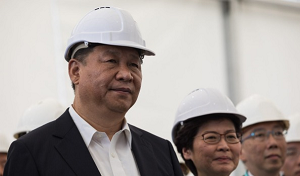
The initiative will include the economic zones of more than 60 countries, which will generate 40 percent of China’s GDP going forward. It will undeniably be an opportunity for engineers to profit from the infrastructural projects China has around the globe.
This comes after China’s National Energy Administration (NEA) announced that all construction projects for new coal power plants have been cancelled. Instead, the NEA is investing $361 billion into expanding renewable energy technologies in an effort to reduce the crippling smog levels in many cities in China. The number of coal power stations that will be halted, according to Reuters, is “over 100”.
It has been estimated that the move from coal to renewable power will reportedly generate 13 million jobs in the renewable energy sector in China.
Universities in China plan to support Xi Jinping with the renewed establishment of the Communist Party’s dominance over government in China. The institutions will reportedly create research institutes that will strive to improve China as a whole. Xi Jinping studied chemical engineering at Tsinghua University himself.
Experts say that China and India’s economic
growth will produce 40% of STEM
(Science Technology Engineering and Mathematics) graduates worldwide, by 2030.

Image: Nova Cidade de Kilamba
Engineering influence
China has become world renowned for its influence in engineering industries across the globe. The country spends billions in creating infrastructure for allied nations. China has construction deals that total US$73 billion in Africa alone.
In 2014, the Nova Cidade de Kilamba was built in Luanda, the capital of Angola, built by the China International Trust and Investment Corporation (CITIC). (The housing development, however, stood largely empty for some years after its construction was completed.)
The group works in Financial Services, Real Estate & Civil Infrastructure, Engineering Contracting, Energy & Resources, Manufacturing, and IT.
Angola forewent any deals with Western governments, choosing to rebuild their country - after a brutal civil war that lasted from 1975 to 2002 - with the help of Chinese companies.
The New York Times reports that Angola exported an estimated US$600 billion in oil alone, from 2002 to 2015. The governments of Brazil and Portugal shared in the construction boom that followed the end of the civil war.
Further afield, in the Southern African country of Lesotho, Chinese embassy political counselors recently handed over the reins to water supply projects built through the China-Lesotho People-to-People Friendship Action Fund.
At the event, the embassy deputy ambassador Mr. Song Changqing said that the fund would lead to “socialism with Chinese characteristics”, which would enter the country into a “new era” with China at the forefront of “building a community of shared future for mankind.”
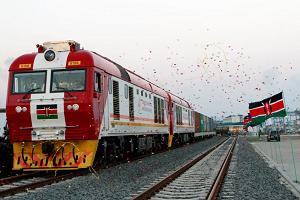
Image: Kenya’s New Railway
Source: Newsweek
Similarly, Kenya has opened their borders to Chinese engineering. The country has just opened their largest infrastructure project of the last fifty years; a 298-mile long railway stretching from Nairobi to Mombasa funded and built by Chinese investors.
The project cost US$3.8 billion, but is part of a bigger project that will improve railway networks across East Africa.
This provides a little insight into Chinese engineering activity in Africa and the world; something that is unlikely to slow down anytime soon.
Works Cited
Hand-over Ceremony of Water Supply Projects Held by China-Lesotho People-to-People Friendship Action Fund in Thaba-Tseka, www.fmprc.gov.cn/mfa_eng/wjb_663304/zwjg_665342/zwbd_665378/t1503949.shtml.
Meng, Meng, et al. “China to Plow $361 Billion into Renewable Fuel by 2020.” Reuters, Thomson Reuters, 5 Jan. 2017, www.reuters.com/article/us-china-energy-renewables-idUSKBN14P06P.
Onishi, Norimitsu. “Angola’s Corrupt Building Boom: ‘Like Opening a Window and Throwing Out Money.’” The New York Times, The New York Times, 24 June 2017, www.nytimes.com/2017/06/24/world/africa/angola-luanda-jose-eduardo-dos-santos.html.
3D printing – the possibilities really are endless of where this technology can take us in the future.
An example of this is with Peter Armstrong, a mechanical engineering student from Colorado who was inspired by a family friend who underwent a double amputation to the lower limbs. Through years of research and various prototypes, Peter has been able to apply his knowledge and skills to produce low-cost prosthetics using 3D printing technology.
He foresees these prosthetics, costing an average of US$300 to produce, being utilized in parts of the world where prosthetics and medical aid can be difficult to afford.
His project has grown into the company, Go Prosthetics and he is currently looking for companies to collaborate with to develop his 3D printed prosthetics further.
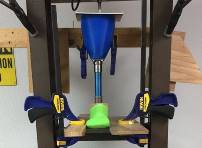
(Image Source: Go Prosthetics)
Prosthetics have come a long way over the years. Developments in technologies such as robotics and 3D printing have made the future for amputees an exciting time and a much cheaper future.
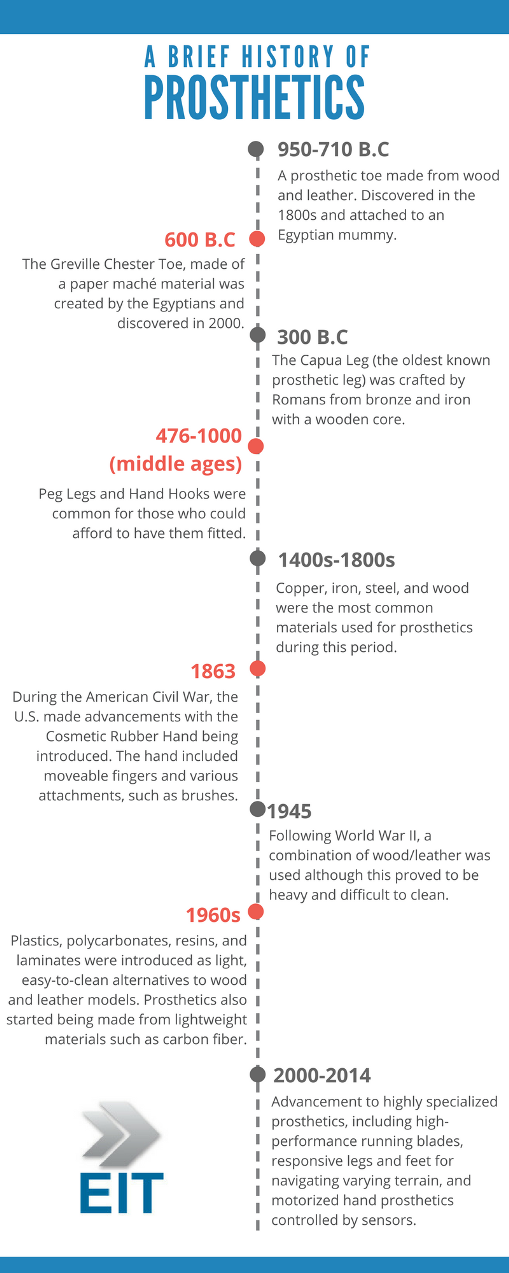
Cryogenics, the world's most advanced artificial intelligence, an automated clothing folder and a rotating, shape-shifting sky scraper. Read ahead for a snapshot of what interesting things October brought us in engineering news...
Cryogenics: Frozen in time
Ever wondered what it would be like to fast forward and suddenly wake up in the future?
Thanks to developing medical science, this may in fact be possible. An increasing amount of people have been paying for their bodies to be cryogenically frozen after they die, so that they may be able to be brought back to life in the future.
For the body to be cryogenically frozen, it must be cooled with ice packs immediately after death, and then drained of its blood. The body must then be submerged into a sleeping bag inside liquid nitrogen, cooled to -196 degrees Celsius.
Dependant upon the company chosen, preserving your body after you die can cost anywhere upwards of $30,000. It is an amazing thought that we could be preserved and wake up sometime in the future – who knows, 1000 years later! However, science has not yet been able to determine how well the body would stay preserved for extended periods of time, and whether the unfreezing process could guarantee a second chance at life.
Artificial Intelligence in China
The world’s most advanced artificial intelligence surveillance system is being used in Hangzhou, China, to track citizens. The project, called the City Brain project, controls certain parts of urban life using data collected by artificial intelligence. For example, traffic flow can be monitored, and citizens are notified of any congestion ten minutes ahead of time so that they can plan a different route. The aim is to improve the life of citizens in China, which so far has been a success, as traffic congestion is now much lower. Watch the video below to see the other wonders that this project involves:
No time to fold washing? No worries!
$850 may seem like a lot of money, but what if we told you that you will never have to fold washing ever again?
A tech start up based in San Francisco have come up with the ‘FoldiMate’, which is a machine that will fold your washing for you all day. All you need to do is hang the freshly washed clothing on the FoldiMate rack and choose the relevant type of clothing that is being folded. The device can sense the fabric type and therefore will adjust accordingly. With it being able to handle 15-20 pieces of clothing at a time, we think this is the ultimate time saving must-have!
Watch the video below for a 30 second preview of the wonderful FoldiMate!
Dubai’s futuristic rotating, shape-shifting sky scraper!
This futuristic sky scraper is coming to Dubai in 2020. Each floor of the tower can rotate individually, offering a 360 degree view! This is the first building that will continually change shape and as a result, will never look the same for more than a single moment. Check out the below video for a look at some of its breathtaking features.
Works cited
https://futurism.com/images/cryonics/
Takreem, Alina. 28 Oct 2018. China Is Using The World’s Most Advanced Artificial Intelligence Based Surveillance System To Track Its Citizens. Wonderful Engineering. http://wonderfulengineering.com/china-is-using-artificial-intelligence-to-track-its-citizens/
Takreem, Alina. 28 Oct 2018. This $850 Gadget Can Fold Your Laundry All Day. Wonderful Engineering. http://wonderfulengineering.com/this-850-gadget-can-fold-your-laundry-all-day/
Futurism. Oct 2017. https://www.youtube.com/watch?time_continue=1&v=dR0Hm9oot6s
Attrition rates are a bone of contention within tertiary education institutions. There is an inevitable desire to deny that the number of students dropping out of courses is too high, let alone rising.
 Students, wherever they obtain the money, invest it into gaining qualifications; the key they believe, to establishing or furthering their careers. This is a high stakes investment with the idea of dropping out unthinkable for many.
Students, wherever they obtain the money, invest it into gaining qualifications; the key they believe, to establishing or furthering their careers. This is a high stakes investment with the idea of dropping out unthinkable for many.
Students failing to complete qualifications, however, is a large scale problem across the globe.
Bill Gates, the brains behind Microsoft, describes the dropout rate in the US as ‘tragic’. Gates laments that out of the 2 million new first-year students set to study at U.S. universities this fall, it is estimated that about half (54.8 percent) will emerge with a diploma at the end of their studies, the rest will drop out. Gates writes:
“The U.S. has the highest college dropout rate. We’re number one in terms of the number of people who start college but we’re like number 20 in terms of the number of people who finish college.”
Gates was informed of these terrifying statistics after visiting Georgia State University (GSU) in the U.S.; a university which is tackling the problem:
Gates attributes the success of GSU’s improvement in graduation rates to the immense wealth of data they are able to generate about their students. Gates reckons that data is the key to figuring out how better to assist students who are in danger of dropping out. He writes:
“Using this information, advisers are now able to identify the students who need assistance - often before the students know it themselves.”
Gates says GSU has actively tried to remove some of the obstacles that result in students failing to continue with university. Some of these included:
- Complex admission forms
- Weaker high school academic records (resulting in high first year drop out rates)
- Financial constraints
- Too many class and major options causing confusion and then becoming a deterrent
There are many factors at play causing students to leave university before graduating. Gates suggests that these should all be determined and then tackled in innovative ways. In GSU’s case, they have redesigned student application processes, for example, and have approached student support in different ways.
Global institutions
The attrition rate crisis is not restricted to the United States, but is a global problem that is affecting campus-based and online education institutions. With the improvement in online technologies new models of education and training are popping up. One of these is the advent of the Massive Open Online Courses, or MOOCs.
MOOCs involve videos of lecturers streaming to thousands of students who enroll online. There is no interaction with the lectures, but some of the formats use discussion boards which are more or less helpful. The attrition rates here are understandably very high.
The Dean of Engineering at the Engineering Institute of Technology, Steve Mackay, says some online models do not effectively retain students. MOOCs, with no interaction between student and lecturer, lead to a 90% drop out rate. Mackay says:
“My suggestion to students is to avoid asynchronous online education. Look instead for courses where there are lecturers and students meeting in real time via a video conferencing or web conferencing format, in other words, synchronous online learning. This approach is less flexible, but is what drives students to finish. Some of our courses, using this platform of learning,  have only a 10% attrition rate.”
have only a 10% attrition rate.”
EIT also employs Learning Support Officers who assist and guide students throughout their studies. And although EIT employs an online approach to education and training, students have the opportunity to interact more with lecturers than in many other models of learning available in the world today.
Offering support to students is the key to retaining them and having them ultimately graduate successfully. But as education becomes increasingly accessible to a larger pool of people education facilities will need to be innovative if they are to provide meaningful qualifications whilst keeping students on board.
Works Cited
Gates, Bill. “Putting Students First.” Gatesnotes.com, www.gatesnotes.com/Education/Georgia-State-University.

It is becoming more technically complex for energy companies to supply energy to their growing base of customers. To confirm the purchase of power a number of broker companies are involved to verify that the purchases have been made.
If governments want the whole world to be connected to some sort of energy grid a novel approach to its supply must be found.
Blockchain Technology
Enter: The Blockchain. A blockchain is a collection of digital transaction blocks that create a digital ledger of unique, encrypted information that cannot be changed or altered.
The blockchain, in a currency sense, confirms cryptocurrency transactions in a ledger. It facilitates safe online transactions in a more efficient and transparent way than previously achieved.
This video contains an interesting way of explaining the blockchain; it uses the mining of diamonds and their distribution to do so:
The energy industry has become very interested in the speedy way the blockchain confirms transactions and is keen to enhance it. According to MIT Technology Review, it takes 60 to 80 days for an electricity producer to obtain the money from consumers.
The alternative is for energy generators and distributors to establish a network that delivers an amount of energy to a customer based on how much a consumer has paid - in real time. The auditing firm Deloitte’s Corporate Venturing and Blockchain Lead, Alexander Shelkovnikov, has recently published a report named, ‘Blockchain applications in energy trading’. An excerpt of the introduction to the report reads:
“Picture a trade floor five years in the future. The robotic trader managing one of the gas desks is about to execute a physical natural gas trade with an industrial customer. One of the robot’s trading algorithms scans available market interests and optimizes its search for the best deal to meet the customer’s volume and tenor requirements for a given period.”
The blockchain system’s transparency will prevent errors, discrepancies and fraud.
The implementation of an automated ledger system could, however, result in some job losses and the transactions may face security risks.
Renewable Energy Opportunities
However, the positive could outweigh the negatives in a renewable energy future. The blockchain technology could allow renewable energy to be sold between individuals who generate it; a peer-to-peer network of energy trading. Australian start-up Power Ledger is trying to capitalize on creating an infrastructure that will facilitate these transactions.
To see how this would work, take a look at this video:
Thus, local traders whose solar panels generate the energy that the grid could benefit from, could trade with individual households in need and with the utilities. It is definitely a disrupting technology, whilst also being a technology that could revolutionize energy trading on a localized and industrial level.
What remains clear, though, is that blockchain needs a level of governmental regulation. But how long will it take before that regulation suffers the same conflicts of interest that caused the first blockchain to be invented? Shelkovnikov asserts, however, that if regulation is imposed and the blockchain implemented in marketplaces, the benefits will outweigh the many negatives.
Energy trading may not be the only area revolutionized by blockchain; it could impact many other engineering industries too. At this stage, however, it seems that the energy industry is the one ready for decentralization, and with blockchain, much like Bitcoin, it might be here sooner than we think.
Works Cited
Diss, Kathryn. “How Blockchain Technology Could Help You Become Your Own Energy Mogul.” ABC News, Nov. 2017, www.abc.net.au/news/2017-10-11/blockchain-technology-fuels-peer-to-peer-energy-trading-start-up/9035616.
Deloitte UK.” Deloitte United Kingdom, June 2017, www2.deloitte.com/uk/en/pages/energy-and-resources/articles/blockchain-applications-in-energy-trading.html.
Back in 2008, when we were expanding from a company providing courses for professional development into a fully-fledged college of engineering, Dick was not only an enormous support, but his involvement contributed to the success we enjoyed. He was hearty in his encouragement of our efforts and he shared his expertise generously. Dick’s enthusiasm certainly carried us through those tenuous early years, when doubts can often undermine one’s confidence and dampen persistence.
We, at the Engineering Institute of Technology (EIT), had adopted a fairly innovative live and interactive online platform of learning, placing us a little ahead of our time. Our methodology certainly caused the regulators in the industry some consternation, but not Dick.
His support for us was reflected in his involvement with the college; he became a member on our Academic Board and gave the introductory lectures on our Advanced Diplomas in Industrial Automation.
To accommodate the time zone differences of students scattered across the globe, our online sessions have to be repeated three times during the day. (Dick had no problem with this as he needed little sleep.) Interestingly, though, many of our students chose to attend all three live webinar sessions; it was clear to them that they were engaging with an engineering rock star.

Dick Morley at The Barn alongside his automated loader
Sharné Pretorius was instrumental in rolling out the earliest versions of our online learning methodology and was deeply saddened at the news of his death. She recalls:
“He was brilliant but unpredictable so moderating his webinars was always a bit of an adrenaline rush”
Dr Steve Mackay, a passionate engineer and our Dean of the college, reflected on a man he considered a friend and mentor:
“What really struck me about Dick was his can do attitude and his encouragement to, ‘just get on with it, don’t hesitate’, admitting, ‘you will often fail, but what the hell’. He was extraordinarily supportive and very interested in our engineering college activities. I could call him at any time (did he ever sleep?) for his valuable counsel on the content of our courses, on marketing and he offered vital contacts. Dick served for many years on our Academic Board and taught on many of our courses (for which, unsurprisingly, he received great accolades). He also kindly, but with gritted teeth (the travel from New England took a good few days) presented at one of our conferences here in Australia. I loved his wry and eccentric sense of humour; he was always thinking from left of field. He will be missed”
In his honour we have created a Dick Morley Prize for Engineering Excellence. Graduates from our Master of Engineering (Industrial Automation) will have the opportunity to win the award - for a thesis considered the most innovative and useful. Dick will be remembered as the Father of the Programmable Logic Controller, certainly. But for us, at the Engineering Institute of Technology, he will be that someone splendid who helped us gird our loins and forge a brave and determined path towards creating a college of excellence in engineering education.
Scotland’s world-first offshore ‘floating’ turbine farm has begun producing energy. 20,000 homes on the mainland will be receiving power from this renewable energy source.
The operation has been constructed in Peterhead in Aberdeenshire, Scotland. In a world first the wind turbines have been placed further out to sea than ever before; they are located 25km (15.5 miles) offshore. Why the greater distance you may ask? In an ocean, the deeper the water the more energy there is to be harvested.
The Chief Executive of WindEurope, Giles Dickson, spoke to The Times saying:
“Eighty percent of Europe’s offshore wind potential is in waters 60m and deeper, where bottom-fixed offshore is less attractive. The potential is massive: 4,000GW in Europe alone.”

The Hywind Scotland Farm was constructed by Statoil who, aiming for optimal energy production targeted the deeper ocean waters further out to sea.
Because of the greater water depth the engineers knew that inserting steel rods into the seabed might fail to keep the turbines rigid. They had to come up with another plan. After 16 years the solution was indeed found and the farm finally came to fruition.
How to float a turbine
The engineers utilized a technology normally employed in deep offshore oil-rig operations; suction buckets.
The video here illustrates how the ‘suction bucket jacket foundation’ technology works (the inspiration for the Hywind Scotland Farm):
Each turbine at the Scottish installation includes a 90-metre long, 3,500 ton, floating substructure. This gets upended into the ocean after which it is ballasted with 5,000 tons of iron ore. Mooring lines are connected to the seabed and attached to the floating substructure by suction bucket anchors.
Every turbine is a marvel of engineering prowess and precision; each one is a multiple piece turbine puzzle which ultimately creates a renewable source of energy production.
What will follow at Peterhead in Aberdeenshire is the installation of a 1MWh lithium-ion battery, placed on-shore. This will store some of the energy received from transmission lines connected to the floating farm.
Watch the entire journey of Hywind Scotland’s floating turbines:
Works Cited
Megan Geuss - Oct 18, 2017 6:13 pm UTC. “First Floating Wind Farm, Built by Offshore Oil Company, Delivers Electricity.” Ars Technica, 2017, arstechnica.com/science/2017/10/first-floating-wind-farm-built-by-offshore-oil-company-delivers-electricity/. Thanks to Nathalie Thomas and The Financial Times for the image
Earlier in the year, the Minister of Higher Education Blade Nzimande survived the cut, however, this time he wasn’t that lucky. The Minister of Higher Education position has been allocated to Prof Hlengiwe Mkhize, the previous minister of Home Affairs.

Image: Former Minister of Higher Education and Training Blade Nzimande
Source: News24
The move by the President further sours the relationship between the members of the once sturdy Tripartite Alliance. The alliance is made up of the African National Congress (the country’s leading party), the Congress of South African Trade Unions (COSATU) and the South African Communist Party (SACP).
The South African Communist Party, of which Blade Nzimande has been the General Secretary in years gone by, has lashed out at President Zuma, saying that the appropriate protocol was not followed with Dr Nzimande’s removal. The SACP were not notified that the shuffle was coming.
The end-of-year exam period in South African universities is one of uncertainty - they have seen protest action from students who demand university fees be lowered in the last two years. Hlengiwe Mkhize, Nzimande’s replacement, has been thrown in the deep end, having to grapple with the reality that there could indeed be more protests this year, as exam time approaches.
Rise of the private institutions?
With the constant shuffling of the heads of higher education departments in South Africa, the training institutions, the budgets that strengthen them and the efficiency of their operations all diminish.
As places of education excellence it is apparent that the public system is facing challenges. Receiving a ‘quality’ education from a department that is constantly returning to square one’ may be a big ask.
And yet South Africa desperately needs competently trained and educated people, including engineering personnel.
The political turmoil in the country is setting the stage for growth in private higher education and training institutions; they will be seen, increasingly, as viable and attractive alternatives.

South Africa should be opening its doors more widely to legitimate, globally operated, higher education and training institutions. With stable education and qualifications of substance available graduates of merit will continue to sustain the growing economy.
Privately-owned institutions that offer synchronous learning experiences via an online framework, with a premium curriculum, will also grow and remain an option for the future of education in South Africa.
The removal of Nzimande, however, causes further concern: private institutions may not get their day in the sun, according to JC-1 ETD Consultants.
JC-1 ETD Consultants is a company which guides private institutions requiring registration with the Department of Higher Education and Training. They also assist them gain accreditation with the Quality Council for Trades and Occupation in South Africa.
They believe that Nzimande was forward-thinking, easing the way for private institutions in terms of gaining the necessary accreditation. They say the removal of Nzimande is similar to “having a head coach replaced from a team that is just achieving success.” In an email to us, addressing the question of how online institutions may change the face of education in South Africa, the company says:
“We believe, that this is an area that can certainly succeed in this country, if not flourish, given the right circumstances. Online services offer learners opportunities where conventional methods requiring time, travel and accommodation often restrict accessibility.”
The South African universities themselves relied on an off-campus, online system of learning when the previous Fees Must Fall protests closed campuses down nationwide. South Africans may find that they have an appetite for e-Learning institutions as the situation worsens. A JC-1 ETD Consultants representative concludes:
“Technological advances offer numerous avenues in which online services can perhaps even better address education and training interventions in certain fields. Newer generations are becoming far more familiar with the use of technology, and with previously less geographically accessible areas, the reach of online education becomes a reality without the logistical problems.”
Sylvia Hammond is the Consulting Editor at Portal Publishing - a leading online publisher in the education and training sector. She too hopes that the department of higher education and training will continue to innovate, so that capable institutions can be established and train the next generation of workers in South Africa. She told us:
“Minister Nzimande brought in the concept of an integrated, articulated post-school system. This provides a framework for school leavers to find the appropriate institute to pursue a career that suits them, and work their way through the various levels of qualification.”
Works Cited
“Zuma Announces Cabinet Reshuffle.” Times LIVE, www.timeslive.co.za/politics/2017-10-17-zuma-announces-cabinet-reshuffle/.
Cue the X-Files music.
“When it comes to shaping the future, one of the greatest obstacles you have is your mind.”
These were the words of Steve Justice, the Head of the Aerospace Department of the ‘To the Stars Academy of Arts & Science’. Never heard of it? Well, that’s because the academy was launched this year, on the 11th of October, 2017.
The academy is a Public Benefit Corporation headed up by CEO Tom DeLonge. The corporation hopes to globally further science and engineering to the point where science fiction becomes established science fact. If the CEO’s name sounds familiar, it’s because he was a musician in a band named Blink 182.
The corporation has released a video that clarifies their vision and mission:
The group has recruited some interesting, previously top-secret, names.
The aforementioned Steve Justice is recently retired from Lockheed Martin’s Advanced Development Programs - better known as Skunk Works. Justice has 31 years of experience under his belt, developing the kind of aircraft that people may have mistaken for UFOs in the sky at some point or another.
The group touts other professionals that will assist in forging a path ahead for UFO-level science and technology expansion. Other members include:
- A former deputy assistant secretary of Defense for Intelligence.
- A former senior intelligence officer for the CIA
- A former director of programs who investigated unidentified aerial threats
- A group of distinguished physicists
- A geneticist
- A molecular biologist
- And an award-winning storyteller
Transportation propulsion
The group hopes to engineer new propulsion technologies that will rival those in Star Wars. On their website, they say they intend to:
“Develop next-generation aerospace propulsion technologies, using a concept referred to as metric engineering, which uses advanced math modelling techniques, providing a technology base to the Aerospace Division for future products.”
They maintain that ‘beamed energy propulsion launch systems’ and ‘advanced electrogravitic propulsion’ technologies are not outside of modern day engineering’s reach.

Image: The academy’s concept for an international point-to-point transportation craft
Source: To the Stars Academy
Steve Justice, speaking on the group’s Facebook Live said of the academy:
“Today, there’s a generation of people that are not buying cars. They’re using on-demand, point-to-point, transportation within cities. Why have a car? Imagine if that was international. You could go anywhere on the face of the earth in a matter of minutes. So, now you’ve removed that parameter of distance and time that separates us from friends on the other side of the earth.”
These kinds of mind-bending technologies don’t exist yet, or, at least haven’t been made public. The only question that the cynical engineer might ask: Is this technology within our grasp? Justice seems to think so. He said:
“Fifteen years ago, you didn’t know that you needed a smartphone, and now you can’t live without it. The technology that we’re talking about is going to enable a future that is difficult, if not impossible, to comprehend today. We’re setting the stage.”
We could be seeing some of these technologies manifest very soon. Justice confirmed:
“The aerospace division is going to harvest technologies and understanding from the science division - it will try to demonstrate the technologies, build prototypes, and even production systems that can change life as we know it.”
And you could become a shareholder in the company today. You can make your investment in the company by visiting their website: https://dpo.tothestarsacademy.com/.
Technology is evolving at a rapid rate. Landing a rocket after launch was considered beyond human capability and Elon Musk’s engineers and associated experts are developing technologies that some might have considered science fiction years ago. This new academy prioritizes thinking outside of the box, of rethinking technology and of pushing the parameters that limit it. This is probably a good addition to the engineering industry; at the very least it is entertaining.
Works Cited
“To The Stars Academy.” To The Stars Academy, Oct. 2017, dpo.tothestarsacademy.com/.
“Tom DeLonge Launches To The Stars Academy to Explore ‘Outer Edges of Science.’”
Alternative Press, www.altpress.com/news/entry/tom_delonge_to_the_stars_academy
Being an engineer is by no means a boring job.
 However, most people will refer to their jobs similarly, that ‘work is work’; that it often involves a daily grind, a slog which is sometimes repetitive and monotonous.
However, most people will refer to their jobs similarly, that ‘work is work’; that it often involves a daily grind, a slog which is sometimes repetitive and monotonous.
Remarks delivered on a social forum for engineers also suggest the monotony that some feel in their engineering jobs.
It has been said that modern day engineering is 10 percent invention and 90 percent maintenance. Meaning, that engineers don’t do much design and development anymore, but rather, maintain what has already been engineered.
When talking about avoiding the monotony of being stuck in a repetitive engineering job, one process engineer with username ‘namkash’, said:
“I asked my boss to give me different tasks. He actually did when he noticed I was getting bored. So, I guess you can ask your boss.” “Try to work somewhere you feel comfortable and happy, at least surround yourself with good coworkers.”
Another engineer, under the pseudonym RallyMech, suggests that keeping your wits about you in a job like engineering involves not feeling like you should over perform. He says:
“Never forget that there is a difference between how much work you are expected to do, and how much you are capable of. Engineers are rarely rewarded for projects that are ahead of schedule. They are expected to finish projects on time and under budget.”
He also mentioned that he fills part of his time becoming more proficient on software like CAD, refines shelved projects and sometimes does market research.
Whilst the opinions of engineers on social media sites should be taken with a grain of salt, the modern day idea of ‘work’ is an ever changing one. There are certain jobs within engineering which involve variety, but inevitably there are those which include repetitive tasks.
It is always worth considering a move to ensure you are in an environment where you are learning new skills and being challenged.
But can one be forced into doing a monotonous job that just doesn’t inspire any form of creativity? There are some women in engineering who may be able to answer this question.
Who does the chores?
The distribution of ‘cool’ roles gets distorted when the historical gender gap in engineering causes age-old exclusion. An investigation into gender parity of engineering courses in universities was conducted by a group of students from the University of California at Irvine, MIT, McGill University and the University of Michigan in 2016.
 The investigation, which produced a report in the journal Work and Occupations, involved following 40 undergraduate engineering students of both genders. Twice every month the students wrote about their comings and goings in the course.
The investigation, which produced a report in the journal Work and Occupations, involved following 40 undergraduate engineering students of both genders. Twice every month the students wrote about their comings and goings in the course.
At the end of the experiment the researchers had 3,000 diary entries from which to generate data. They found that the females were generally excluded from all the fun stuff. An excerpt of the report read:
“There was this one case where, in our design class, two girls in a group had been working on the robot we were building in the class for hours, and the guys in the group came in and within minutes had sentenced them to doing menial tasks while the guys went and had all the fun in the machine shop.”
It is the monotony of menial tasks, and being forced to do them, which has discouraged some women fro pursuing careers in engineering. The automation of all repetitive tasks may, however, make all menial tasks redundant. Engineers will have to step up to ensure they are creative and design-savvy, to ensure they cope with the ‘cooler’ stuff, while the robots tackle the rest.
Engineering happiness
Happiness in your engineering job is absolutely crucial. The Dean of the Engineering Institute of Technology Steve Mackay, has a rule-of-thumb that you can use to measure your happiness by:
Works Cited
Images from Pixabay.com
Tekla S. Perry
Posted 17 Jun 2016 | 16:00 GMT. “Are Women Exiting Engineering Because Men Have All the Fun?” IEEE Spectrum: Technology, Engineering, and Science News, 2016, spectrum.ieee.org/view-from-the-valley/at-work/tech-careers/are-women-being-pushed-out-of-engineering-because-men-have-all-the-fun.
“How Do You Deal with Monotony • r/Engineering.” Reddit, www.reddit.com/r/engineering/comments/75c8u2/how_do_you_deal_with_monotony/.
Blog - Steve Mackay
EIT's Technical Director, Steve Mackay, enjoys keeping his blog up-to-date with useful tips and current industry matters for his fellow colleagues. He has a loyal and expanding following base reaching over 300,000 people around the world.
Student Stories
In this section you have the opportunity to read and listen to EIT students talking about the reality of the programs. Discussions are wide-ranging and include information about the study commitment required, the value of the qualification in their careers, the relevance of the subject matter, future pathways, and more. They provide valuable feedback for you to take into account before you decide to join one of our programs.
Career Information
Latest career information including industry research, podcasts, blogs, life hacks and general information about how you can make the most out of your career.
Education
Here you will find out more about the latest trends and developments within education worldwide, along with some helpful articles regarding study tips and keeping on track with your studies.
Developments
The latest innovation and inventions from the world of engineering can be found here. Learn about advances in technology and how they can make a real difference within your industry.
Announcements
Keep up to date with the latest announcements from the Engineering Institute of Technology. In this section you can read more about new courses, new recognition from professional bodies, our Excellence in Teaching Award, upcoming free webinars and much more.
Monthly Update
We understand that you may not have time to read all the articles that we post, so our monthly update gives you access to some fascinating articles which cover the best of the months news in a compact format.
